Attractions
- UNESCO World Heritage Sites
- Protected Areas
- Eight Thousanders
- Pilgrimage Sites
- Bungee Jumping
- Motor Biking
- Rafting & Kayaking
- Mountain Biking
- Paragliding
- Cave Exploration

Bird Watching
Mountain viewing.
- Jungle Discovery
- Butterfly Watching
- Nagarkot Sunrise and Sunset
- Traditional Crafts
- Meet the People
- Village Tours
- Food & Culinary
- Cultural Tours
- Heritage Walk
- Museum Tours
- Faith Healing
- Panchakarma Treatment
- Sound Meditation
- Natural Hot Water Springs in Nepal
- Pilgrimage Tours
- Destination Wedding
- Indra Jatra
- Chhat Parva
- Event Calendar
- Festival Highlights
- Travel with children
- Ganesh Himal Trek
- Chandragiri - Chitlang - Kulekhani
- Pilgrimage to Doleshwar mahadev Temple
About Nepal
Travel details.
- Tourist Visa
- Local Transportation
- Trekking Permit
- Park Entry Fees
- Heritage Site Entry Fees
- Tourist Police
- Safety in the Mountains
Book Your Trip
- Book Experience
- Travel Updates
Mt. Everest (8,848 m)
Climb everest if you want to stand on top of the world, or do the extremely popular everest base camp trek to enter a strange world of ice and snow..
Reach the highest point on earth or choose to live out your dream by standing at the foot of Mt. Everest (8,848 m).
The Everest region in Nepal is more than just climbing and trekking, it is a life-changing experience and some see it as a journey close to achieving Nirvana. Located in the northeastern province of Nepal, this region is in a world of its own with vast glaciers, icefalls, the highest mountains, deep valleys, precarious settlements, and hardy people challenging the harshest conditions thrown at them by nature in the thin air of high altitude.
Passing through legendary Sherpa villages, the trek is a mix of deep cultural and spiritual experiences and physical challenges that test your strength and endurance. Buddhist lamas, monks and nuns led by Rinpoches (reincarnate at mas) serve the predominantly Sherpa communities from their gompas ( monasteries ).
The journey to Everest or Everest Base Camp begins with a dramatic flight from Kathmandu to Lukla, after which you hike up the Everest region to reach your destination in the Himalayas. However, for die-hard lovers of trekking, there is another switchback starting from Jiri through the mid-hills of Solu, an ethnically diverse section of the trek rich
For those with sufficient time, a 10-12 day trek through Solu to the Khumbu and the Sagarmatha National Park is an excellent itinerary both in terms of acclimatization and to observe the changing customs, traditions, and lifestyles as you go from the lower altitude settlements to those in the higher altitudes.
A part of the Himalayan ecological zone, the park was added to the list of UNESCO Natural World Heritage Sites in 1979. The park has three of the world's highest mountains: Everest, Lhotse, and Cho Oyu besides countless other peaks that rise above 6,000 meters from sea level.
Taking a flight is a time-saver, while trekking from Jiri gives you the opportunity to follow in the footsteps of Tenzing and Hillary before their conquest of Everest. With more time to interact with the charming people along the route, you get to see the rich flora and fauna on the long trail. You get the added benefit of natural acclimatization as you go up and down the cliffs and valleys.
The option from Jiri will roughly add 10 days to your trip to the famous Sherpa village, Namche Bazaar (3,500m). The Sagarmatha National Park in which Mt. Everest lies is one of the few places on earth with the rarest bio-diversity and the highest mountains in the world.
Places to see in Everest Region
Namche bazaar, gokyo valley, khunde & khumjung, everest base camp, sagarmatha national park, to do in the everest region, mountaineering, meet the people.

Nepal Tourism Board is a national tourism organization of Nepal established in 1998 by an Act of Parliament in the form of partnership between the Government of Nepal and private sector tourism industry to develop and market Nepal as an attractive tourist destination. The Board provides platform for vision-drawn leadership for Nepal’s tourism sector by integrating Government commitment with the dynamism of private sector.
Nepal Tourism Board
Other sites.
- Tenders & Trade
- Photo Nepal
Feedback Form
- 2023 Everest Death Toll Confirmed as Worst in History
- 1924 Everest Mystery Heats Up: Did the Chinese Find Irvine’s Body?
- New signboard at Everest Base Camp
- Remembering Those Lost: The 1996 Mount Everest Disaster
- Green Boots: Landmark of Everest
- Everest Permits Soar to $15,000 Starting 2025
- Nepal Entry Protocol June 7, 2023: for International Visitors
- Paragliding in Chitwan!
- Snowstorm on Mount Everest: 3 Sherpa climbers die
- Trek In Nepal Without A Guide: Foreign Tourists Are Prohibited
- Nepal Entry Protocol 2023
- COVID-19 Update (2022)
- COVID 19 Safety Protocols for Travelers in Nepal
- How to get VISA in Nepal post COVID?
- COVID-19 Update: International Flights Resumed 2021
- COVID-19 Update: Nepal Travel Restrictions

Nepal Travel Vibes
Be The Adventure

10 Must-Try Activities in Mount Everest

Welcome to the majestic Everest region, a realm of towering peaks, breathtaking landscapes, and rich cultural heritage. Whether you seek adrenaline-pumping adventures or immersive cultural experiences, Everest offers something for every adventurer. This guide explores 10 must-try activities that will leave you breathless and yearning for more.
Table of Contents
Unforgettable Experiences in Everest
- Trek to the Roof of the World: Embark on the iconic Everest Base Camp Trek , offering stunning vistas and unparalleled access to the world’s highest mountain. For breathtaking lake views, consider the Gokyo Lakes Trek or traverse challenging high passes on the Three Passes Trek .
- Bike Through Rugged Terrain: Thrill-seekers will find an exhilarating challenge in mountain biking. Explore diverse trails, from the Jiri to Everest Base Camp route to the Upper Mustang Circuit, while soaking in the grandeur of the Himalayas.
- Conquering the Peaks: For experienced mountaineers, Everest offers legendary challenges like Lhotse and Cho Oyu. Remember, proper training and safety precautions are crucial for these demanding climbs.
- Immerse Yourself in Nature: Camp under the starry sky, surrounded by snow-capped peaks. Camping offers a unique chance to connect with nature and appreciate the serenity of the Everest region.
- Find Inner Peace: Embrace the tranquility of yoga and meditation amidst the majestic Himalayas. The stunning scenery and serene atmosphere create a perfect setting for spiritual rejuvenation.
- Experience the Thrill of Skiing: Ski enthusiasts can find challenging slopes during the winter season. Cross-country skiing requires expertise and safety due to the terrain, but the rewards are unmatched.
- Explore on Four Hooves: Discover the region through a traditional yak safari. These gentle giants offer a unique way to travel and connect with the local culture.
- Delve into Local Culture: Immerse yourself in the rich tapestry of Sherpa traditions. Visit monasteries like Tengboche, witness vibrant festivals like Mani Rimdu, and savor local delicacies like momos and thukpa.
- Raft the Wild Waters: Unleash your inner adventurer with exhilarating river rafting on the Dudh Koshi River. Navigate through rapids, immerse yourself in stunning scenery, and experience the thrill of nature’s power.
- Spot Wildlife in its Natural Habitat: Keep your eyes peeled for rare and endangered species in Sagarmatha National Park. Snow leopards, red pandas, and Himalayan black bears are just a few of the fascinating creatures you might encounter.
- Capture the Majesty: Photograph the breathtaking landscapes, vibrant cultures, and unique wildlife. From snow-capped peaks to hidden valleys, Everest is a photographer’s paradise.
- Soar Above the Summit: Take a helicopter tour for a bird’s-eye view of Everest Base Camp, Gokyo Lakes, and Kalapatthar. Witness the vastness of the Himalayas and capture stunning aerial photographs.
- Gaze at the Starry Night: Escape light pollution and marvel at the dazzling night sky. Camping or staying at lodges provides the perfect opportunity to stargaze and appreciate the vastness of the universe.
- Take a Gondola Ride: Experience the breathtaking scenery from a unique perspective on the Gulag Gondola, the second-highest cable car in Asia. Soar above 10,000 feet and capture unforgettable panoramic views.
Bonus Activities:
- Explore Namche Bazaar: This bustling town offers a glimpse into local life and provides essential supplies for your treks.
- Trek to Khumbu Glacier: Witness the source of the iconic Khumbu Icefall and experience the awe-inspiring power of glacial landscapes.
- Take a Scenic Flight: Soar above the majestic peaks and capture breathtaking aerial views of the Everest region without strenuous activity.
- Visit the Tengboche Monastery: Find peace and tranquility in this serene monastery, offering stunning views and a chance to experience Sherpa culture.
- Enjoy a Yak Ride: Embrace a unique and traditional way to explore the region and connect with the local way of life.
Conclusion:
Everest beckons with its diverse experiences, from challenging adventures to cultural immersion and breathtaking beauty. Choose your activities, create unforgettable memories, and conquer your own Everest!
Discover more from Nepal Travel Vibes
Subscribe to get the latest posts to your email.
Type your email…
An adventurer, writer, and Founder of Nepal Travel Vibes.
Similar Posts

My backpacking trip to Mount Everest

Experience the Thrill of Whitewater Rafting in Nepal

Soaring Above the Clouds: A Pokhara Hot Air Balloon Adventure
Latest posts from nepal travel vibes.

18 Must-Try Nepali Beers for Your Trip to Nepal

How to Plan a Trip in 2024 – AWESOME Guide to Trip Planning

Gurung Culture: Unveiling the Heritage, Festivals, & Food
Leave a reply cancel reply.
Your email address will not be published. Required fields are marked *
Save my name, email, and website in this browser for the next time I comment.
Notify me of follow-up comments by email.
Notify me of new posts by email.
AD Blocker Detected
Ads can be a pain, but they are our only way to maintain the server. Please deactive Ads blocker to read the content. Your co-operation is highly appreciated and we hope our service can be worth it.
Subscribe now to keep reading and get access to the full archive.
Continue reading
Mount Everest
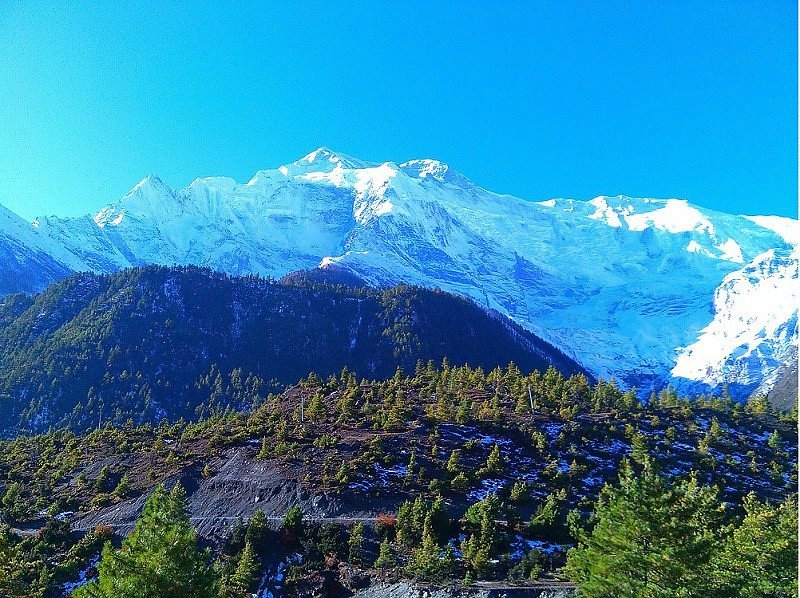
Most Recent: Reviews ordered by most recent publish date in descending order.
Detailed Reviews: Reviews ordered by recency and descriptiveness of user-identified themes such as wait time, length of visit, general tips, and location information.
Also popular with travelers
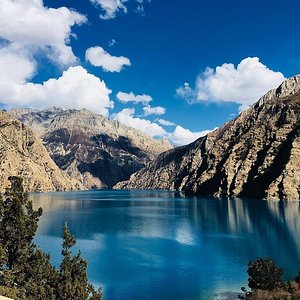
Mount Everest - All You Need to Know BEFORE You Go (2024)
- Everest Base Camp Trek (From $1,499.00)
- Mountain Everest Scenic Flight with Hotel Pickup and Dropoff (From $120.00)
- Everest Base Camp Trek - 14 Days (From $1,500.00)
- Everest Base Camp Helicopter Tour Stop at Everest View Hotel (From $1,600.00)
- Everest Mountain Flight tour From Kathmandu - Daily Departures (From $190.00)
- (3.48 mi) Hotel Tashi Delek
- (4.14 mi) The Edelweiss Pheriche
- (3.72 mi) Hotel Summit 4410m
- (3.67 mi) Hotel Summit
- (3.82 mi) Moon Light lodge
- (0.90 mi) Cafe De Imja Tse & Bakery
- (3.74 mi) Cafe 4410
- (3.51 mi) Cafe Himalaya
- (3.84 mi) French Bakery Cafe
- (3.51 mi) Cafe Himalayan
- (8.99 mi) Tengboche Gompa
- (6.88 mi) Kala Patthar
- (4.75 mi) Osho Vision Tours & Travels Pvt,Ltd
- (5.78 mi) Makalu Mountain
- (6.72 mi) Everest Base Camp
- 86-19138970032 (GMT+8 18:00~09:00)

- Beijing Xian Tours
- Shanghai Beijing Tours
- Hong Kong Guilin Tours
- Hangzhou Suzhou Tours
- Kunming Lijiang Tours
- Shanghai Yangtze Cruise Tours
- Chengdu Tibet Tours
- More Short Stay Tours
- China Tours in January
- China Tours in February
- China Tours in March
- China Tours in April
- China Tours in May
- China Tours in June
- China Tours in July
- China Tours in August
- China Tours in September
- China Tours in October
- China Tours in November
- China Tours in December

- High Speed Trains
- China Yangtze Cruise Tour
- Photography
- Desert Adventure
- Ethnic Villages
- Biking Tours
- Kung Fu Tours
- Heritage Sites Exploration
- China Spring Tours
- China Summer Tours
- China Autumn Tours
- China Winter Tours
Notice! 2024 available cruise routes include 4~5 days Chongqing-Yichang(most classic) and 11~12 days Chongqing-Yichang-Shanghai(limited).

- Best-value Yangtze Cruises
- Top Family-friendly Cruise Ships
- Top 3 Luxury Yangtze River Cruises
- Yangtze River Highlights
- Yangtze River Cruise Routes
- Upstream or Downstream?
- Dining & Drinking
- Accommodations
- On-board Activities
- Yangtze Cruise Booking Steps

- Inner Mongolia

- Fanjingshan
- How to Plan Your First China Tour
- How to Plan Beijing Tour
- How to Plan Xian Tour
- How to Plan Shanghai Tour
- How to Plan Guilin Tour
- How to Plan Sichuan Tour
- How to Plan Family Tour
- 2024 China Travel Ideas
- Best Time to Visit China
- What to Pack for Your China Journey
- Make Payment in China
- Updated China Travel News
- Ultimate Chinese Visa Guide
- Chinese Visa Types
- Chinese Visa Requirements
- Do I Need a Visa for China
- Chinese Visa Application
- Chinese Visa Exemptions
- 144-hour Visa Free
- Shenzhen Visa on Arrival
- Hainan 30-day Visa Free
- Embassies & Consulates
- Invitation Letter
- Useful Visa FAQs & Tips
- Entry Regulations
- Baggage Allowance
- Customs Declaration
- Exit Regulation
- How to Book Train Tickets
- How to Collect Train Tickets
- How to Cancel & Alter Train Tickets
- How to Read Train Tickets
- China High Speed Train Types
- Seats Class & How to Choose
- Friendly Facilities on the Train
- The Train Station Departure Process
- Available Food and Drinks on the Train
- Western Toilets on the Train
- Luggage Racks & Baggage Allowance
- Beijing Train Stations
- Shanghai Train Stations
- Guilin Train Stations
- Xian Train Stations
- Chengdu Train Stations
- Hong Kong West Kowloon Railway Station
- Beijing - Xian
- Beijing - Shanghai
- Guangzhou - Shanghai
- Shenzhen - Shanghai
- Chengdu - Xian
- Shanghai - Hangzhou
- Shanghai - Xian
- Chengdu - Chongqing
- Kunming - Lijiang
- Beijing Capital International
- Beijing Daxing International
- Shanghai Pudong International
- Shanghai Hongqiao International
- Guangzhou Baiyun International
- Hangzhou Xiaoshan International
- Chengdu Tianfu International
- Chengdu Shuangliu International
- Xian Xianyang International
- Shanghai - Beijing
- Hong Kong - Shanghai
- Guangzhou - Beijing
- Chengdu - Lhasa
- Shanghai - Guilin
- Shanghai - Sanya
- Travel in Spring Season
- Travel in Summer Season
- Travel in Autumn Season
- Travel in Winter Season
- Weather in January
- Weather in February
- Weather in March
- Weather in April
- Weather in May
- Weather in June
- Weather in July
- Weather in August
- Weather in September
- Weather in October
- Weather in November
- Weather in December
- Top 10 China Destinations
- Top 15 Things to Do
- China World Heritage Sites
- Top 10 Best Natural Beauties
- Top 10 Museums in China
- Top 10 Old Towns & Villages
- Five Great Mountains in China
- Top 10 Monasteries & Temples
- Top 10 Ski Resorts
- Top 10 Beautiful Lakes in China
- 7 Best Beaches in Sanya
- Top 6 Beautiful Waterfalls
- Panda Volunteering
- Having fun on Ice and Snow Festival
- About Us Who We Are Our Team Why Travel with Us Feedback & Reviews Travel Stories Travelers' Gallery Payment Guide Customer Support Contact Us
- Tour Experiences
Destinations
- Travel Guide
Things to do in Mount Everest
Mount Everest is one of the most popular destinations in Tibet. Each year, thousands of tourists come to take this once in a lifetime trip from all around the world. Don't take it granted that Mount Everest is the highest mountain in the world and nothing else special. Mount Everest will surprise you with its extraordinary landscape and brilliant influence in the world.
Besides the stunning landscape of Mount Everest itself, there are two great highlights on the Mount Everest - Rongbuk Monastery and Everest Base Camp . Rongbuk Monastery is a Buddhist temple which is believed to be the highest temple in the world. While the Everest Base Camp is the biggest base camp for mountaineers who want to conquer the highest peak in the world.
Popular Tour Packages including Mount Everest
- 8 Days Classic Mount Everest Tour from Lhasa
- 10 Days Chengdu Lhasa Everest Overland Tour
- 8 Days Tibet Classic Tour from Kathmandu
- 8 Days Lhasa to Kathmandu Overland Tour via EBC
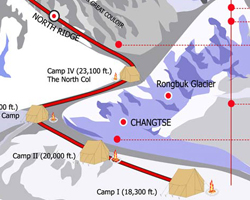
Shigatse Travel Map
- Top Attractions
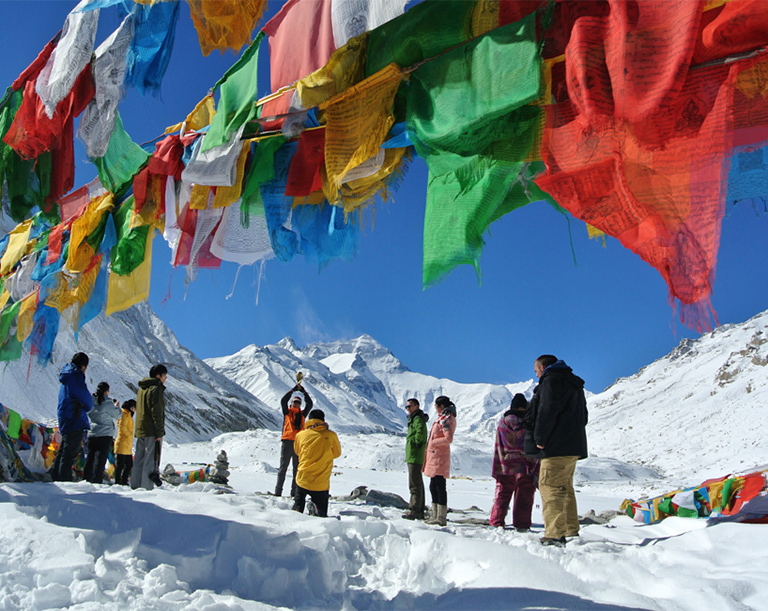
No. 1: Mount Everest
Type: Mountains, Nature & Parks
Recommended visiting: 1 day
Mount Everest is the highest mountain in the world with an elevation of 8844.43 meters. Thousands of people make their expedition from far away to explore the splendid looks of “The Third Pole”. Mount Everest is located on the border of China and Nepal. The southern side is located in Nepal, very steep and difficult for regular tourists to visit. While, the northern side is located in Tibet, and goes up gradually to the Everest Base Camp locating at the altitude of 5,200m. The infrastructure in the northern Mount Everest is much better than the southern side. Travelers can take vehicle to the Everest Base Camp to get bigger views of Mount Everest. Besides, travelers are able to use electric power at EBC.
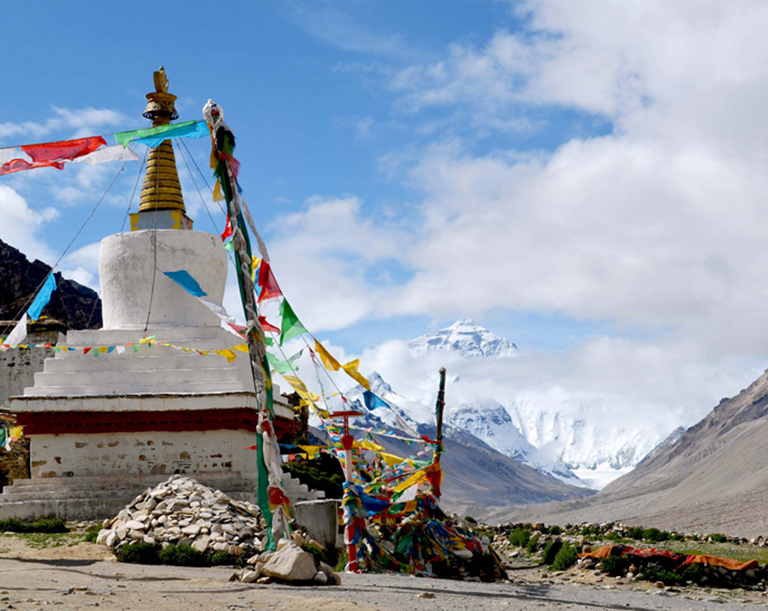
No. 2: Rongbuk Monastery
Type: Religious Sites, Lookouts, Sights & Landmarks
Recommended visiting: 1 hour
Rongbuk Monastery, located at the altitude of 5,154m, is the highest monastery in the world. It was originally built in 1899 by a lama of Nyingma sect of Tibetan Buddhism. It consists of two sites: old monastery and new monastery. The new site was built in 1902. Though small, but Rongbuk Monastery is an influential monastery which has 8 small affiliated monasteries, including a nunnery.
Statues of Sakyamuni Buddha and Padma Sambhava are enshrined and worshiped here. Rongbuk Monastery is the perfect place to view the giant Mount Everest.
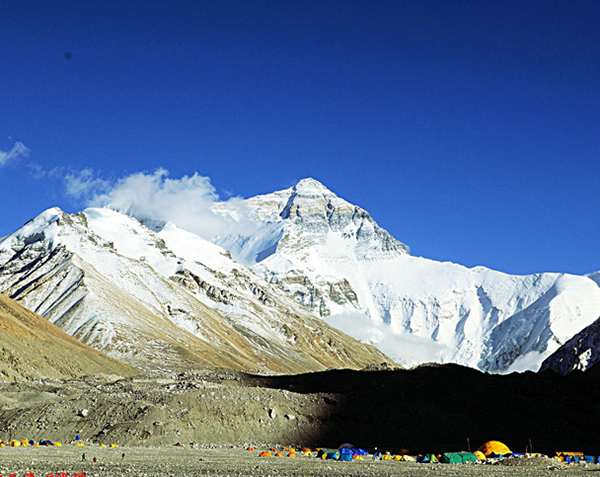
No. 3: Everest Base Camp
Type: Religious sites, Sights & Landmarks
Recommended visiting: 2 hours
Everest Base Camp (EBC) is about 8km upwards from Rongbuk Monastery. Travelers usually take eco-bus to EBC. If you are energetic, you can hike up to the Base. The road gradually goes higher.
The EBC is the most important base for mountaineers who want to climb further the Mount Everest. Mountaineers usually stay here for supply and take good rest before climbing upper. From April to May is the best time to climb the Mount Everest when you can see many colorful tents encamped around the EBC.
How to Plan Your Tibet Adventure to Mount Everest
To visit Mount Everest , you can get to Lhasa in Tibet, or Kathmandu in Nepal first, then transfer to Mount Everest (North Pole) by car. It is about 605km's driving from Lhasa to Mount Everest on a well-paved road. Instead of driving directly head to Mount Everest, travelers usually travel for two days to Mount Everest at a leisure pace, via Gyantse and Shigase , and visit many famous attractions on route, such as Yamdrok Lake, Karola Glacier, Palcho Monastery , Tashilunpo Monastery , etc. After leaving Mount Everest, you can go back to Lhasa, or travel overlanding for 2 days to Kathmandu. You can also travel from Kathmandu to Mount Everest. Transfer about 160km from Kathmandu City to Gyirong Port at Nepal Tibet border, check in China Customs, then drive 25km to Gyirong Town for accommodation. On the next day, you will drive about 325km to Mount Everest. After the Mount Everest, you can extend your trip to Lhasa, and visit Shigatse, Gyantse and Yamdrok Lake on route.
Keep Reading
- Mount Everest transportation
- Hotels in Mount Everest
- Mount Everest Weather & Seasons
- Mount Everest Maps
Recommended Everest Tours
Top 3 Everest tours chosen by most customers to explore Everest in the best way. Check the detailed itinerary, or tailor your own trip now with us.
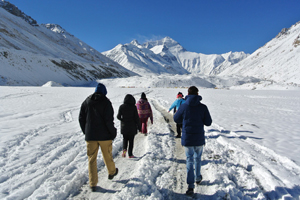
8 Days Classic Mount Everest Private Tour from Lhasa
Lhasa / Gyantse / Shigatse/ Everest
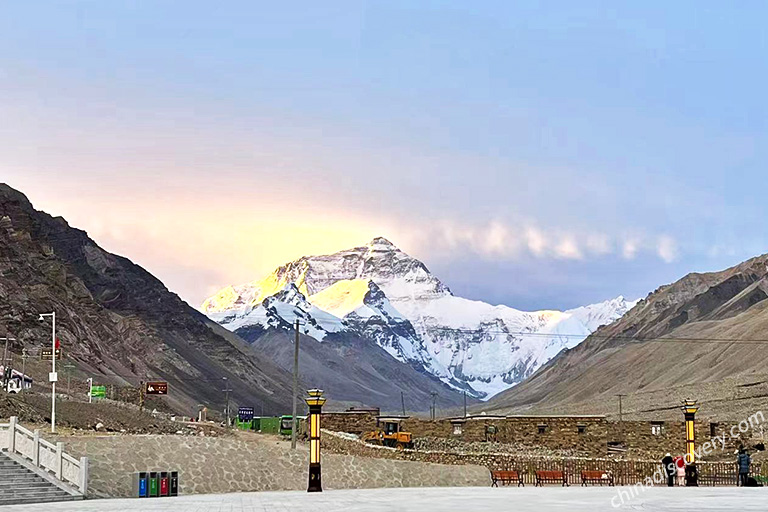
9 Days Tibet Discovery Tour Including Everest and Namtso Lake
Lhasa / Gyangtse / Shigatse / Mt.Everest / Namtso Lake
Start planning your tailor-made holiday to China by contacting one of our specialists. Once inquired, you’ll get a response within 0.5~23.5 hours.

- Affordable and valuable price
- 100% tailor-made packages
- Highly rated customers reviews
- Efficient customer support
China Tours
- Top 10 China Tours
- Classic China Tours
- China Tours from Beijing
- China Tours from Shanghai
- China Tours from Hong Kong
- China Tours from Chengdu
- Short China Trips
- Customize China Tour
- China Panda Tours
- Family Tour with Kids
- High-Speed Train Tour
- Silk Road Travel
- Yangtze River Cruise
- Hiking & Trekking Tours
- Photography Tours
- China Minority Travel
- Beijing Shanghai Tours
- Shanghai Yangtze Tours
- Chengdu Jiuzhaigou Tours
- Chengdu Lhasa Tours
- Suzhou Hangzhou Tours
- Guilin & Yangshuo
- Zhangjiajie
“Very good experience”
“WONDERFUL 25 DAYS IN CHINA - PRIVATE TOUR”
“Awesome China tour from northeast to southwest”
Any questions, please email us at: [email protected] or call us at: 86-19138970032 (Monday-Friday 9 a.m. to 6 p.m. GMT+8)
- Terms & Condition
- Privacy Policy
- Customer Support
Copyright © 2011-2024. All rights reserved.
Cookie policy
We use cookies to give you the best experience on our website. Continue using our website means you agree with our cookie policy. For more info, please read here .
Press Release
Climate change and human impacts are altering mt. everest faster and more significantly than previously known.

Photograph by National Geographic Rolex Logo Lockup
November 20, 2020 Washington, D.C . -- Today, new findings from the most comprehensive scientific expedition to Mt. Everest in history have been released in the interdisciplinary scientific journal One Earth . Featuring a collection of research papers and commentaries on Mt. Everest, known locally as Sagarmatha and Chomolangma, the research identifies critical information about the Earth’s highest-mountain glaciers and the impacts they are experiencing due to climate change. As part of the 2019 National Geographic and Rolex Perpetual Planet Everest Expedition, climate scientists studied the environmental changes including Everest’s “death zone” to understand future impacts for life on Earth as global temperatures rise.
This new research fills a critical knowledge gap on the health and status of high-mountain environments, which are incredibly difficult to study due to the inhospitable environmental conditions. Key findings include:
- The highest-ever recorded sample of microplastics was found on the “Balcony” of Mt. Everest at 8,440 m, one of the last resting spots before reaching the summit. This microplastic is likely coming from the clothing and equipment worn by climbers, highlighting the impacts of humans on even the highest reaches of our planet.
- Researchers surveyed nearly 80 glaciers around Mt. Everest and found evidence of consistent glacial mass loss over the last 60 years and that glaciers are thinning, even at extreme altitudes above 6,000 m. Using declassified spy satellites and a new highest-resolution data set, this is the most complete assessment of the status of the world’s highest glacier as a baseline for future research on its changes.
- Additionally, the research captures the first documented surge of a glacier (when it moves 10 to 100 times faster than it normally does) in the Mt. Everest region, a phenomenon that can put people and communities at risk.
Glaciers like those on Everest provide ⅕ of the global population with a steady supply of fresh water around the world. But due to the extreme conditions of these high mountains, little information up until now has existed about the impacts of climate change at elevations above 5,000m.
“Mountains and their rapidly-disappearing glaciers are the “water towers” of our planet, storing and transporting freshwater to nearly two billion people around the world. That water supply is increasingly under threat due to rising temperatures, melting glaciers, pollution, and other human-caused and environmental stressors,” said Paul Mayewski, Scientific and Expedition Lead, and Director, Climate Change Institute University of Maine, and lead author of the preview “Pushing Climate Change Science to the Roof of the World” published in One Earth.
Microplastic pollution at the highest point on Earth is a direct result of increased tourism and waste accumulation. A large proportion of that waste is made out of non-biodegradable plastic. While visible plastic has been reported on Mt. Everest previously, the pristine environment at Earth’s highest peaks is changing. The new data highlights that the collected snow samples had significantly more microplastics compared to the stream samples, with the majority of microplastics being fibrous.
“With increased tourism, microplastics throughout Mt. Everest is expected to rise, creating issues for the environment and people of the Khumbu region,” said Imogen Napper, National Geographic Explorer and first author of “Reaching New Heights in Plastic Pollution — Preliminary Findings of Microplastics on Mount Everest."
Results from the highest weather stations in the world demonstrate that the majority of precipitation to the Mt. Everest region is sourced in the Bay of Bengal, highlighting the importance of atmospheric circulation to high mountain glaciers. Further, the weather stations enabled a full reconstruction of climber’s oxygen availability during past Everest summit attempts to generate a comparison of climbing difficulty.
From April to May 2019, an international, multidisciplinary team of scientists conducted the most comprehensive single scientific expedition to Mt. Everest in the Khumbu Region of Nepal as part of the National Geographic and Rolex partnership. Team members from eight countries, including 17 Nepali researchers conducted trailblazing research in five areas of science that are critical to understanding environmental changes and their impacts: biology, glaciology, meteorology, geology and mapping.
Scientists are now utilizing the samples and data they collected during the Expedition to gain unique insights into how climate change and human populations are affecting even the highest reaches of our planet. Even the highest glaciers on Earth are reeling from human activity around the globe.
“Mountains will outlast us,” the One Earth editorial team wrote in its “The Changing Face of Mountains” editorial. “But without immediate action and integrated approaches to adaptation and sustainable development, they will lose their majesty. They will become diminished. With consequences for us all.”
Papers from the National Geographic collaboration include:
- King et al.: “Six decades of glacier mass changes around Mt. Everest revealed by historical and contemporary images,” an Article publishing in One Earth (ONEEAR266)
- Napper et al.: “Reaching new heights in plastic pollution – preliminary findings of microplastics on Mount Everest,” an Article publishing in One Earth (ONEEAR267)
- Perry et al.: “Precipitation Characteristics and Moisture Source Regions on Mt. Everest in the Khumbu, Nepal,” an Article publishing in One Earth (ONEEAR258)
- Matthews et al.: “Into Thick(er) Air? Oxygen Availability at Humans’ Physiological Frontier on Mount Everest,” an Article publishing in iScience (ISCI101718)
- Elvin et al.: “Behind the scenes of a comprehensive scientific expedition to Mt. Everest,” a Backstory publishing in One Earth (ONEEAR253)
- Mayewski et al.: “Climate Change in the Hindu Kush Himalayas: Basis and Gaps,” a Reflection publishing in One Earth (ONEEAR254)
- Miner et al.: “An overview of physical risks in the Mt. Everest region,” a Primer publishing in One Earth (ONEEAR255)
- “Voices from the roof of the world,” a collection of 6 Voices publishing in One Earth (ONEEAR252)
- Mayewski et al.: “Pushing Climate Change Science to the Roof of the World,” a Preview publishing in One Earth (ONEEAR268)
- Elmore et al.: “Understanding the World’s Water Towers through High-Mountain Expeditions and Scientific Discovery,” a Preview publishing in One Earth (ONEEAR264)
- “Everest Night Lights,” a Visual Earth publishing in One Earth (ONEEAR265)
- “Birth of Sagarmatha,” a Visual Earth publishing in One Earth (ONEEAR269)
This work was supported by the National Geographic Society and Rolex. To learn more about the Everest Expedition, please visit: https://www.nationalgeographic.org/projects/perpetual-planet/everest/ and tune into our YouTube page to get a closer look at the 2019 National Geographic and Rolex Perpetual Planet Everest Expedition
Related Files:
PDFs of all papers
Selection of images available for media use
To embed videos related to the National Geographic and Rolex Perpetual Planet Everest Expedition, please visit:
- Everest Expedition
- Meteorology
- 360: The Science
- 360: The Mission
Media Contact
The National Geographic Society is a global nonprofit organization that uses the power of science, exploration, education and storytelling to illuminate and protect the wonder of our world. Since 1888, National Geographic has pushed the boundaries of exploration, investing in bold people and transformative ideas, providing more than 15,000 grants for work across all seven continents, reaching 3 million students each year through education offerings, and engaging audiences around the globe through signature experiences, stories and content. To learn more, visit www.nationalgeographic.org or follow us on Instagram , LinkedIn, and Facebook .
Deals of the Week Solo is the new black Up to 50% OFF
Everest Tours & Trips
Find the right tour package for you through Mount Everest. We've got 775 trips going to Mount Everest, starting from just 3 days in length, and the longest tour is 65 days. The most popular month to go is May, which has the most tour departures.
250+ Mount Everest tours with 3,304 reviews
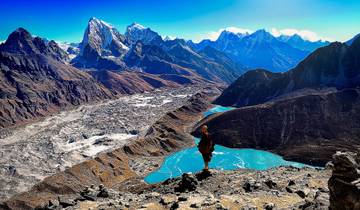
- Hiking & Trekking
- Mountain Hikes
- Christmas & New Year
Everest Base Camp Trek
I have already done the review sent from g adventures - another one is duplication.
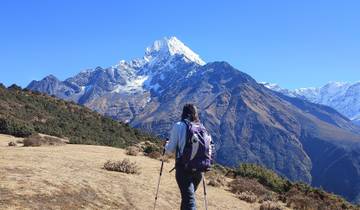
What’s not to like. These guys are amazing

Everest Base Camp Trekking
My Everest Base Camp trek with Sherpa Expedition and Trekking exceeded all expectations. Our guide was knowledgeable, friendly, and always made sure we were well-informed. The trip was well-organized, and the accommodations were clean and comfortable. The meals served were delicious, providing us with the energy we needed for the trek. It was a fantastic experience, and I'm already planning my next visit to Nepal with Sherpa Expedition and Trekking.

Everest Base Camp Trek 12 Days
Die Trekkingtour zum Everest Base Camp mit Sherpa Expedition und Trekking Guide Lakpa war eine lebensverändernde Erfahrung, die alle Erwartungen übertroffen hat. Von dem Moment unserer Ankunft in Kathmandu bis zu unserer triumphalen Rückkehr aus dem Himalaya hat Lakpas Expertise, Professionalität und unerschütterliche Unterstützung jeden Schritt der Reise unvergesslich und lohnenswert gemacht. Ankunft und Orientierung: Unser Abenteuer begann mit einem herzlichen Empfang in Kathmandu, wo Lakpa und das Team von Sherpa Expedition uns mit einem Lächeln und Enthusiasmus begrüßten. Lakpas gründliche Orientierung und Aufmerksamkeit für Details haben unserem Team das nötige Vertrauen gegeben, um für die bevorstehenden Herausforderungen gut vorbereitet zu sein. Sein Wissen über die Trekkingroute, lokale Bräuche und Sicherheitsprotokolle legte den Grundstein für eine erfolgreiche Expedition. Höhepunkte des Trekkings: Während des Trekkings war Lakpas Führung von unschätzbarem Wert, während wir uns durch anspruchsvolles Gelände kämpften, uns an höhere Höhen akklimatisierten und die atemberaubenden Landschaften der Everest-Region bestaunten. Von den belebten Straßen von Namche Bazaar bis zur stillen Schönheit des Tengboche-Klosters teilte Lakpa sein tiefes Verständnis für die Sherpa-Kultur und die natürlichen Wunder des Himalayas und bereicherte damit unsere Erfahrung an jeder Ecke. Erreichen des Everest Base Camps: Der Höhepunkt unserer Reise war das Erreichen des Everest Base Camps, ein surrealer Moment, der für immer in unseren Erinnerungen bleiben wird. Lakpas Führung und Ermutigung trieben uns voran und sicherten unsere Sicherheit und unser Wohlbefinden, als wir den letzten Abschnitt zum Fuße des höchsten Berges der Welt erklommen. Das Gefühl des Erfolgs und der Kameradschaft in unserer Gruppe war greifbar, nicht zuletzt dank der unerschütterlichen Unterstützung durch Lakpa. Rückkehr und Reflexion: Als wir zurück nach Lukla abstiegen und uns von den majestätischen Bergen verabschiedeten, reflektierten wir über den tiefgreifenden Einfluss unserer Everest Base Camp Trekking-Erfahrung mit Lakpa und Sherpa Expedition. Die Reise hatte nicht nur unsere körperlichen Grenzen getestet, sondern auch ein tiefes Verständnis für die Schönheit der Natur und die Widerstandsfähigkeit des menschlichen Geistes gefördert. Unsere sichere Rückkehr nach Kathmandu war ein bittersüßer Moment, geprägt von Dankbarkeit für die unvergessliche Erfahrung, die wir geteilt hatten. Fazit: Zusammenfassend war das Trekking zum Everest Base Camp mit Sherpa Expedition und Trekking Guide Lakpa eine transformative und unvergessliche Erfahrung, die alle Erwartungen übertraf. Lakpas Expertise, Professionalität und echte Fürsorge für unser Wohlbefinden machten die Reise wirklich außergewöhnlich und ermöglichten es uns, uns mit Vertrauen und Gelassenheit in die Wunder des Himalayas zu vertiefen. Wenn Sie ein außergewöhnliches Trekking-Erlebnis in der Everest-Region suchen, dann sind Sie bei Sherpa Expedition und Trekking mit Lakpa als Ihrem Guide genau richtig.

Epic scenery, amazing group of people - such a fun dynamic, and everyone was so supportive as the trek got into the higher altitudes. Loved every second.
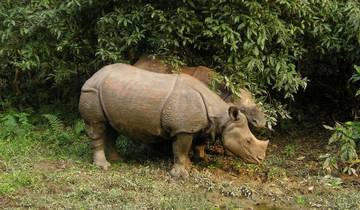
Classic Nepal Tour
A short trip and covered minimum areas was very interesting and a variety of scenery and culture
- 10% deposit on some dates Some departure dates offer you the chance to book this tour with a lower deposit.
- Book With Flexibility This operator allows you to rebook your dates or tours with them for free, waiving change fees.
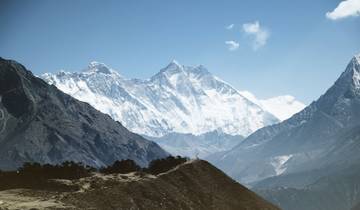
Everest Base Camp (13 Nights 14 Days) Trek
My dream come true...thank you World Travel Experiences team for perfectly arranging my trip to EBC. We really had a great time at Everest region. Highly recommendable..!!!

We did the Everest base camp trek with the Alpine ramble treks and also the Annapurna base camp trek; these were amazing trips of our life. Form the begging to the end, we did not have to worry about where to stay and eat, they explained everything on our arrival and introduced our guide (Nir), who was so wonderful guide and very professional, explaining the local culture, people, food, and he knows all the mountains, he is a true legend and we will surely join this fantastic team for our next trip to Nepal and highly recommended to anyone who is planning to visit Nepal for trekking. The are top!
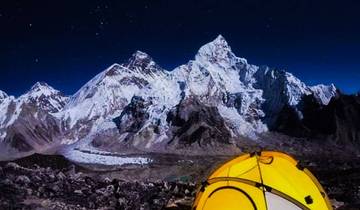
Trekking to Everest Base Camp is truly a once-in-a-lifetime experience. The breathtaking views, challenging trails, and the sense of accomplishment are indescribable. Thanks to Sherpa Expedition and their amazing guide, we had an incredible and memorable journey. Highly recommend for those seeking adventure!

Everest Base Camp Trek 16-day
A fantastic EBC trek. The company communicated well during the entire process and then delivered a great experience as promised. Transportation, food and accommodations were exceptional. We were well prepared each day and felt well supported throughout.

Everest Base Camp Trek with Helicopter Return
Excellent trip to Everest base camp! If you are planning on exploring (the base of) the top of the world -please book with Nepal Trekking Routes. We had a wonderful experience- before we decided to even book our trip the owner answered every question in a timely manner (I asked a lot of questions). We were greeted at the airport and taken directly to our hotel (amazing perk after traveling over 24 hours). Our tour guide Nawin was fantastic, he catered to every request and was an excellent source of information and inspiration (emphasis on inspiration, hiking to EBC was challenging at times). We made it to EBC! Nepal Trekking Routes Really went above and beyond to make sure we had a great trip- upon our return to Kathmandu they also arranged transportation to the airport and even checked in to make sure we made it back to Miami (excellent customer service). Bottom line we had a magical trip through Himalayas-Nepal trekking routes made it possible!

Everest Base Camp Trek + Two way Flights
Our itinerary had to be shortened due to delayed flights to Lukla and wet weather. Our guide, Nawin, helped us get as far as Pangboche and Amadablam base camp. Shailesh a great organiser. Still a marvellous trip. A cultural explosion to the senses.

Epic Everest Base Camp Trek
Fantastic trip! Couldn't have asked for a better guide/assistant guides! Very supportive and ensured that 7/7 of us made it to base camp!

Everest Base Camp Luxury Lodge Trek
Trekking to Everest Base Camp in luxury was an experience I'll never forget. Under the expert guidance of Sonam Sherpa, our group of eight navigated the stunning Khumbu Valley. The thoughtfully planned itinerary facilitated acclimatization while ensuring we were treated to spectacular views of the Himalayas every step of the way. Each day unveiled new wonders: the imposing Ama Dablam and the iconic Everest itself loomed over us, awe-inspiring and majestic. A highlight was our ascent to Kala Patthar, a peak that offers the nearest view of Everest Base Camp. There, as the sun set, the sky burst into a kaleidoscope of colors, bathing the snow-capped summits in ethereal light. Sharing this moment of sheer beauty and collective triumph with my fellow trekkers was indescribably moving.

Everest Base Camp Trek and Fly back by Helicopter
We got amazing natural and adventurous experience during our EBC Helicopter Trekking. Thank you all for providing this wonderful EBC Experience.
Mount Everest Tours & Trips Reviews
I couldn’t recommend Nepal Hiking team more highly. I was a solo female traveller, and it could not have been a better trip. From the initial booking process the team have been exceptional in their communication and this continued throughout the entire trek. Once arriving in Kathmandu, you are welcomed by a friendly team and the WoodApple hotel was a fantastic place to find your feet in a good location in Kathmandu that’s not too far away from Thamal to ensure you can buy any last minute gear you may need, the food in the rooftop restaurant was excellent and the views of Kathmandu are fantastic. Our Guides Dhurba and Indra were amazing and really helped to ensure this was a trip of a lifetime. The knowledge they have about the Himalayas ensured no question went unanswered and they set a perfect pace for the group to make sure we all reached base camp but also really enjoyed the entire experience with plenty of laughs along the way. If you are considering doing the EBC… do it! And if your considering which company to go with …. Book with ‘Nepal Hiking Team’.
My Everest Base Camp trek with Sherpa Expedition was nothing short of incredible. The team's attention to detail and dedication to ensuring a safe and enjoyable experience were evident throughout the entire journey. The guides were not only knowledgeable about the area but also incredibly supportive and encouraging. The breathtaking landscapes, challenging yet rewarding trails, and warm hospitality made this trek a once-in-a-lifetime adventure. I am grateful for the memories created and would wholeheartedly endorse Sherpa Expedition for their exceptional service
Mount Everest Destinations:
- Gokyo Valley Trek (25)
Mount Everest Tours starting in:
- Kathmandu (621)
- Group (679)
- Hiking & Trekking (648)
- Personalized (519)
- Fully Guided (476)
- Family (394)
- Active (343)
- Partially Guided (291)
- Custom (166)
- Private (88)
- Explorer (65)
- In-depth Cultural (20)
- Intl. Flights Included (8)
- Small Group (487)
- 7 Day Tours (45)
- 10 Day Tours (73)
- 2 Week Tours (264)
- 3 Week Tours (255)
- 4 Week Tours (15)
- 1 Month+ Tours (4)
- Spring 2024 (552)
- Summer 2024 (558)
- Fall / Autumn 2024 (603)
- Winter 2024 / 2025 (541)
- Spring 2025 (438)
- Summer 2025 (344)
- Fall / Autumn 2025 (377)
- Winter 2025 / 2026 (339)
- May 2024 (617)
- June 2024 (549)
- July 2024 (486)
- August 2024 (499)
- September 2024 (593)
- October 2024 (596)
- November 2024 (584)
- December 2024 (536)
- January 2025 (424)
- February 2025 (396)
- March 2025 (435)
- April 2025 (428)
- May 2025 (412)
- June 2025 (337)
- July 2025 (309)
- August 2025 (319)
- September 2025 (372)
- October 2025 (376)
- November 2025 (371)
- December 2025 (337)
Other Regions in Nepal
- Mount Annapurna (1063)
- Mount Kala Patthar (655)
- Gorakshep Trail (412)
- Langtang National Park (144)
- Chitwan National Park (69)
- Upper Mustang (41)
- Mount Manaslu (7)
- Bardia National Park (6)
- Everest Base Camp
Travel Styles
- Budget (134)
- Luxury (62)
- Singles and Solo (442)
- For Couples (137)
- Seniors (204)
- Heavenly Peak A Guide To...
Heavenly Peak: A Guide To the Best Times To Visit Mount Everest

Each year, Mount Everest attracts adventurous travellers who are rewarded with one of the most incredible sites in the world. Here, Tibettravel.org offers a handy guide to the best time to visit Mount Everest.

Mount Everest is reputed to be the highest mountain in the world, and reaching its pinnacle remains the holy grail of mountaineers. Every year, people from all over the world flock to Tibet to visit this stunning mountain of the Himalayan ranges. Tibettravel.org ’s guide to Everest suggests that the best time to travel to see Mount Everest’s staggering snow-capped peaks is during spring and autumn, from April to May and from September to November. Even as the height of this peak decreases day by day due to the global warming (the official height of the Everest is 8848.13 meters above sea level; in 2005, it was officially recorded to be 8844.43 meters above sea level), the mountain’s magnificent grandeur and promise of challenge remains a strong draw. Located at the border between Nepal and Tibet , the northern part of Mount Everest is located in Tingri County in southwestern Tibet. There are two Everest base camps on opposite sides of Mount Everest, namely South Everest Base Camp in Nepal and North Everest Base Camp in Tibet. From the Everest Base Camp in Tibet, travellers can see the magnificent northern face of the highest peak on the earth.

Over the years, since the first successful ascent by Tenzing Norgay and Edmund Hilary in 1953, many expeditions have sought to conquer Mount Everest. Of the two ascents, many experienced mountaineers choose to climb the Mt. Everest from the north side as it is more challenging than the south side. Tibet EBC is located at an altitude of 5,545 meters (18,192 ft) and is used when climbing via the northeast ridge. The North Base Camp has vehicle access (at least in the summer months) through a 100km road branching to the South from the Friendship Highway near Shegar. Climbers typically rest at base camp for several days to acclimate to reduce the risks and severity of altitude sickness. In fact, what is considered the ‘tourist’ base camp is located about half-way between Rongbuk Monastery and the actual climbers Base Camp at the foot of Rongbuk Glacier. The best time to visit Mount Everest is in the spring and autumn for several reasons. Mount Everest’s changeable, extreme climate, in particular, is a determining factor. The summit temperature never rises above freezing, or 0° C (32° F). Its summit temperatures in January average -36° C (-32 ° F) and can drop to -60° C (-76° F), and its average summit temperature in July is -2° F (-19° C). Weather conditions in the high summit is notoriously difficult to predict.
In the winter months, from January to March , Mount Everest is cold, but from afar, visitors can get some of the clearest and most beautiful glimpses of Mount Everest. Snow, unsurprisingly, can be expected from December to February. Staying warm and dry is paramount; during winter, weather conditions can be notoriously unpredictable, and the temperature ranges from as high as 20° C to as low as -15°C. From April to May, even mid-June , is arguably the ideal time to Mount Everest; not only is the peak often visible and clear. For mountaineers, the climbing window between April and May is also one of the best times to attempt an ascent to the summit. From mid-June to August , summer may sound like the prime time to visit Mount Everest, but it is also monsoon season during which the mountain can receive large amounts of rainfall. During the monsoon season, the Everest peak is, more often than not, shrouded in mist. However, it is very cool in this season in Tibet and visitors can enjoy fine weather in other parts of the region. Summer, then, is the best time to visit Tibet though visitors wishing to see the Everest peak may be disappointed.

From September to November , after the monsoon passes and just before the harsh winter moves in, a small window of opportunity opens up for travellers eager to glimpse the mountain at its best. Autumn is also the peak time for climbers, with many more climbers seeking to reach the summit than in the spring. Visitors who are interested in making the trek from Tingri to Everest Base Camp , the best time extends from mid-September to May, coinciding with the end of the monsoon season. By the end of September through December the weather tends to be relatively stable with mild to warm days and cold nights. Since 2010, a visit to the North Base Camp in Tibet requires a permit called Alien’s travel permit from the Chinese government, on top of the Tibet entry permit required to visit Tibet itself. At this time such permits must be arranged via Tibet travel agencies such as Tibettravel.org as part of a package tour that includes hiring a vehicle, a driver and a guide. By Tibettravel.org
Since you are here, we would like to share our vision for the future of travel - and the direction Culture Trip is moving in.
Culture Trip launched in 2011 with a simple yet passionate mission: to inspire people to go beyond their boundaries and experience what makes a place, its people and its culture special and meaningful — and this is still in our DNA today. We are proud that, for more than a decade, millions like you have trusted our award-winning recommendations by people who deeply understand what makes certain places and communities so special.
Increasingly we believe the world needs more meaningful, real-life connections between curious travellers keen to explore the world in a more responsible way. That is why we have intensively curated a collection of premium small-group trips as an invitation to meet and connect with new, like-minded people for once-in-a-lifetime experiences in three categories: Culture Trips, Rail Trips and Private Trips. Our Trips are suitable for both solo travelers, couples and friends who want to explore the world together.
Culture Trips are deeply immersive 5 to 16 days itineraries, that combine authentic local experiences, exciting activities and 4-5* accommodation to look forward to at the end of each day. Our Rail Trips are our most planet-friendly itineraries that invite you to take the scenic route, relax whilst getting under the skin of a destination. Our Private Trips are fully tailored itineraries, curated by our Travel Experts specifically for you, your friends or your family.
We know that many of you worry about the environmental impact of travel and are looking for ways of expanding horizons in ways that do minimal harm - and may even bring benefits. We are committed to go as far as possible in curating our trips with care for the planet. That is why all of our trips are flightless in destination, fully carbon offset - and we have ambitious plans to be net zero in the very near future.

See & Do
Aiming high: meet the first black african to summit everest.

Bars & Cafes
Visit the world’s highest irish pub in namche bazaar, nepal.

This Virtual Museum Allows Armchair Travellers to Explore Nepal

Places to Stay
The best hotels to book in nepal for every traveller.

Chitwan National Park: the Centre for Jungle Safari in Nepal

The Best Bookshops in Kathmandu, Nepal

Guides & Tips
How to spend two weeks in nepal.

Health & Wellness
The everest marathon: running the world’s highest race.

How To Spend 10 Days In Nepal's Terai Region

Hiking Nepal: Everything You Need to Know

The Best Markets in Kathmandu, Nepal

The Solo Traveller's Guide to Nepal
Culture trip spring sale, save up to $1,100 on our unique small-group trips limited spots..

- Post ID: 98777
- Sponsored? No
- View Payload
ENCYCLOPEDIC ENTRY
Mount everest.
Mount Everest is the highest point on Earth. Learn about its history, the people who live there, and the people who visit to climb.
Anthropology, Conservation, Earth Science, Geology, Geography, Human Geography, Physical Geography
Mount Everest Snowdrift
Mount Everest is the highest of the Himalayan mountains, and—at 8,850 meters (29,035 feet)—is considered the highest point on Earth.
Photograph by Barry Bishop, courtesy of the National Geographic image collection
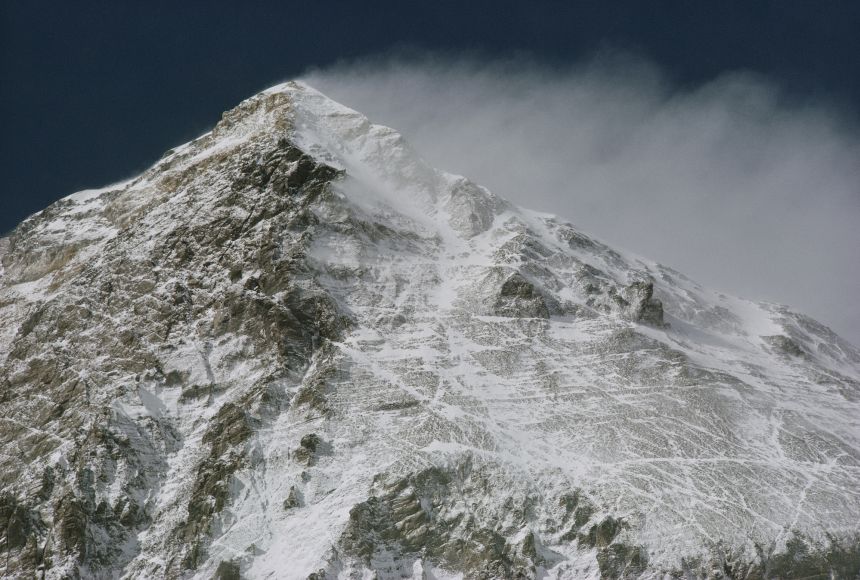
Mount Everest is a peak in the Himalaya mountain range. It is located between Nepal and Tibet, an autonomous region of China. At 8,849 meters (29,032 feet), it is considered the tallest point on Earth. In the nineteenth century, the mountain was named after George Everest, a former Surveyor General of India. The Tibetan name is Chomolungma, which means “Mother Goddess of the World.” The Nepali name is Sagarmatha, which has various meanings.
The first ever recorded people to climb Everest were Edmund Hillary (a mountaineer from New Zealand) and his Tibetan guide Tenzing Norgay. They climbed the mountain in 1953 and hold the record together. The first records of Everest’s height came much earlier, in 1856. British surveyors recorded that Everest was the tallest peak in the world in their Great Trigonometrical Survey of the Indian subcontinent.
The Himalayan mountains have long been home to indigenous groups living in the valleys. The most famous of these are the Sherpa people. The word “ Sherpa ” is often used to mean mountain guide, though it actually refers to an ethnic group. The Sherpa have valuable experience in mountain climbing, which they can provide to other climbers. Most climbs of Everest would be impossible without the Sherpas ’ logistical help and knowledge. However, their way of life extends beyond helping Everest climbers. Traditionally, their lifestyle has consisted of farming, herding, and trade. And, because they live at such a high altitude year round, they are accustomed to the low oxygen levels.
Climbing Mount Everest has become a popular expedition for mountain climbers. However, it is a dangerous undertaking. Climbing Everest requires a lot of experience mountaineering elsewhere, as well as a certificate of good health, equipment, and a trained Nepalese guide. The snow and ice on the mountain create deadly hazards like avalanches , and there is only a limited climbing season due to bad weather conditions. But perhaps the biggest danger is the altitude. Most climbers are not accustomed to the high altitude and low oxygen levels and rely on bottled oxygen they bring along. This is why the area above 8,000 meters (26,000 feet) elevation on Everest is called the “death zone.” Climbers who spend long periods in this region can develop altitude sickness and even brain swelling.
Mount Everest ’s climbing industry has become controversial. As popularity of the climb has increased, there have been more “traffic jams” as climbers spend too much time in the death zone waiting for their chance to go to the summit . With more people has also come more pollution up near the summit as climbers often discard unwanted items all along the mountain . Additionally, the Sherpa people have been exploited by climbers, and their traditional way of life has been disrupted by foreign climbers. Sherpa guides are faced with some of the highest death rates of any field of employment, for comparatively little pay. Most disturbingly, because many climbers have died along the way, and their bodies are impossible to retrieve, climbers must frequently travel past corpses as they make their way up the mountain .
Media Credits
The audio, illustrations, photos, and videos are credited beneath the media asset, except for promotional images, which generally link to another page that contains the media credit. The Rights Holder for media is the person or group credited.
Production Managers
Program specialists, last updated.
October 19, 2023
User Permissions
For information on user permissions, please read our Terms of Service. If you have questions about how to cite anything on our website in your project or classroom presentation, please contact your teacher. They will best know the preferred format. When you reach out to them, you will need the page title, URL, and the date you accessed the resource.
If a media asset is downloadable, a download button appears in the corner of the media viewer. If no button appears, you cannot download or save the media.
Text on this page is printable and can be used according to our Terms of Service .
Interactives
Any interactives on this page can only be played while you are visiting our website. You cannot download interactives.
Related Resources
Mount Everest

Mount Everest is the world's tallest mountain at 8,848.86 m (29,032 ft). It straddles the border of China / Tibet and Nepal and can be visited from either side:

- Everest Base Camp Trek through Khumbu (Sagarmatha National Park), the more commonly visited region on the Nepalese (southern) side of the mountain
- Qomolangma , the less visited nature reserve on the Tibetan (northern) side
See also Hillary and Norgay , the first to climb Everest.
- Has custom banner
- Extra regions
- Region articles
- All destination articles
- Has Geo parameter
Navigation menu

- 7 Best Places to See Mount Everest
- You are here:
- Everest Guide
- May 17, 2020
Rupak Parajuli
Nepal , home to four of the six of the tallest mountains which are Everest, Makalu, Lhotse, and Cho Oyu. The mountains have become one of the main attractions of the Khumbu (also known as the Everest region). Trekkers from all around the world come to the Everest region to catch a glimpse of the awe-inspiring snow-capped mountains.
While you can see the views of the mountain from most of the places, there are some spots that let you get a more majestic view of the mountains in the Everest region. We have compiled a list of the places where you will be able to get the most prominent views of Mt. Everest.
Table of Contents
Plan your trip to nepal.
Customize your trip with help from a local travel specialist.
Everest View Hotel
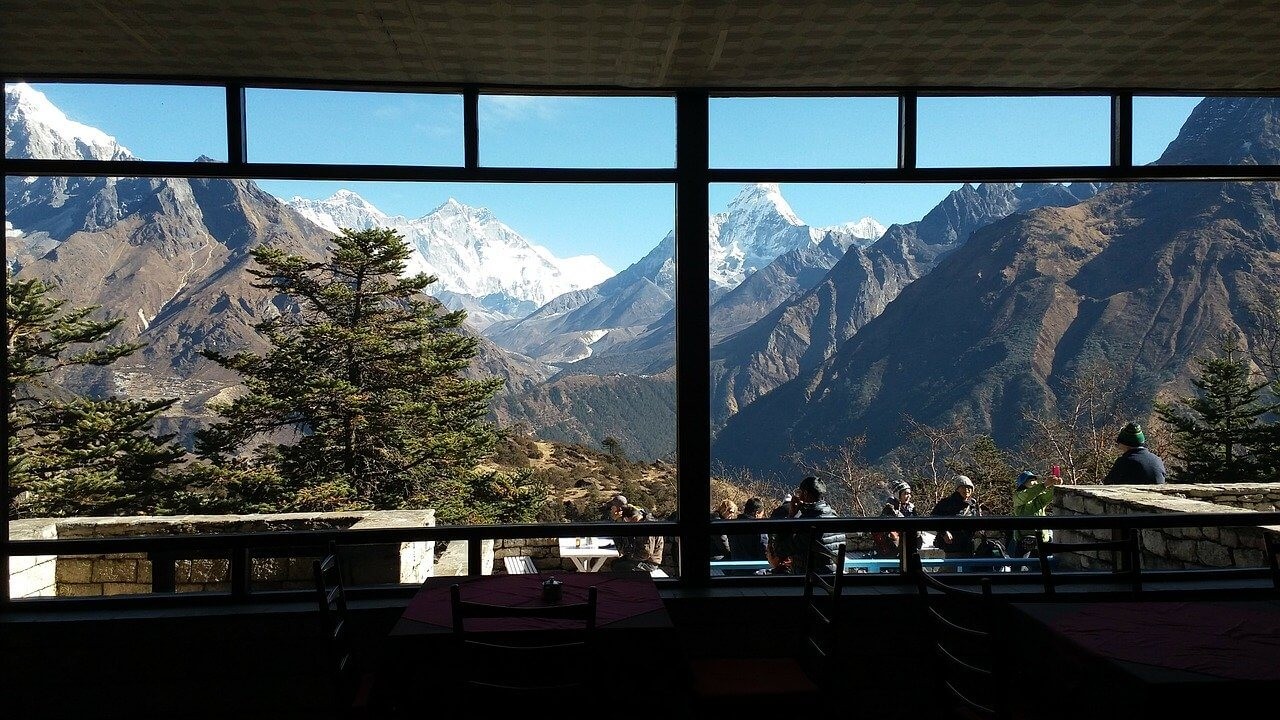
Blending in with its surroundings, the Everest view hotel is an outstanding hospitality institution that is concealed on an edge that overlooks Everest. The hotel is located inside the Sagarmatha National Park in Nepal which is a UNESCO World Heritage site and it offers a panoramic view of the snow-capped mountain peaks. From every room of the hotel, the visitors will be able to see Mt Everest and they can submerge themselves in this hypnotic scene in extravagance.
Also Read: 5 Days Everest View Trek
The hotel was started in 1971 and since then it has garnered a place in the Guinness Book of World Records (2004) as the ‘Highest Placed Hotel’ in the world standing at 13000ft. Since its establishment, the hotel has had lots of features in guidebooks and received tons of media coverage and become a well-renowned destination. The adventurous spirit of the Himalayas is embodied by Hotel Everest View and it is the seamless residence from where you can go to discover the villages close by and to relish the stunning site filled with classic bushes, rhododendron woodlands and fir trees. The staff there are also dedicated and will provide you with the required services and delightful cuisine.
Renjo La Pass
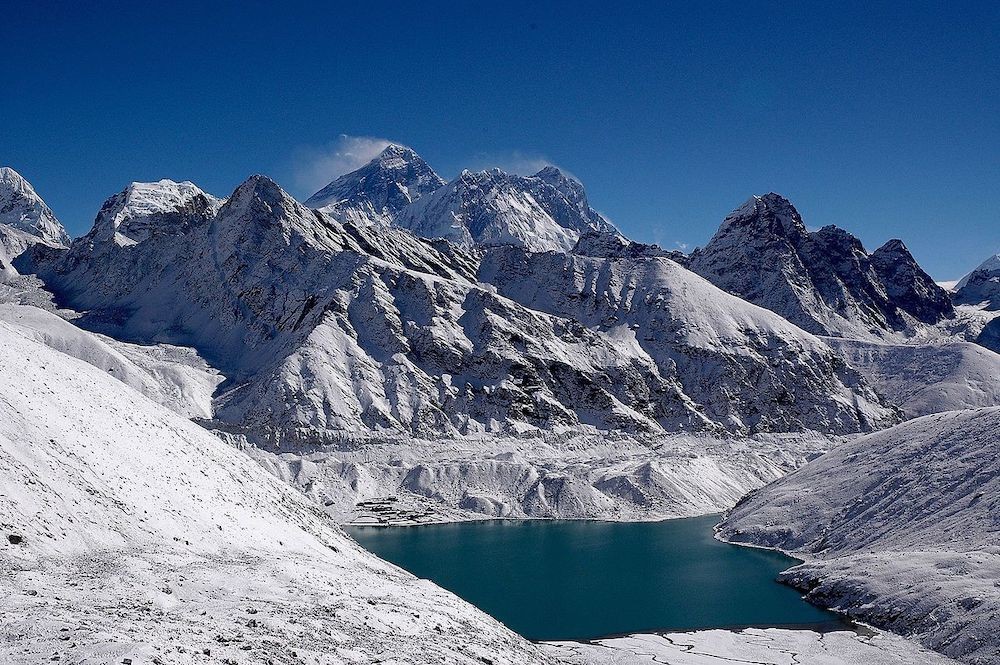
A great way to get to know the exceptional landscapes in this brilliant Himalayan nation of Nepal is to go on the Renjo La Pass Trek which travels the mountains and hikes into the raw earth on popular trails. The Renjo La Pass trek prominently displays its natural exquisiteness in extravagance when the sun begins to shine and the snow melts. The natural beauty seen here can probably be seen nowhere else. In the Everest region, this is one of the most exhilarating trekking zones and one of the harder trails to commence in this region. The trek lets trekkers discover the utmost well-known natural spots of Nepal in a limited amount of time.
Also Read: Everest Three Passes Trek
The Renjo La Pass trek is ideal for those who are looking for adventure treks that can be done among mesmerizing mountains. The trek takes you through the heartlands of the Sherpas known as Khumbu and offers an awe-inspiring Himalayan panorama of all of the Solo Khumbu region, as well as Mt Everest (8848 meters) and Mt Lhotse (8516 meters). Moreover, you will be able to see Mt. Ama Dablam (6856 meters), Mt. Makalu (8463 meters), Nuptse (7855 meters), Mt Thamserku (6723 meters), Mt Pumori (7145 meters), Mt. Cho Oyu (8201 meters) and other well-known ascending mountain crests of the Everest region. While exploring the Gokyo valley, you will also get to discover luxurious valleys, high passes, the Tibetan Sherpa culture, and their earnest generosity.
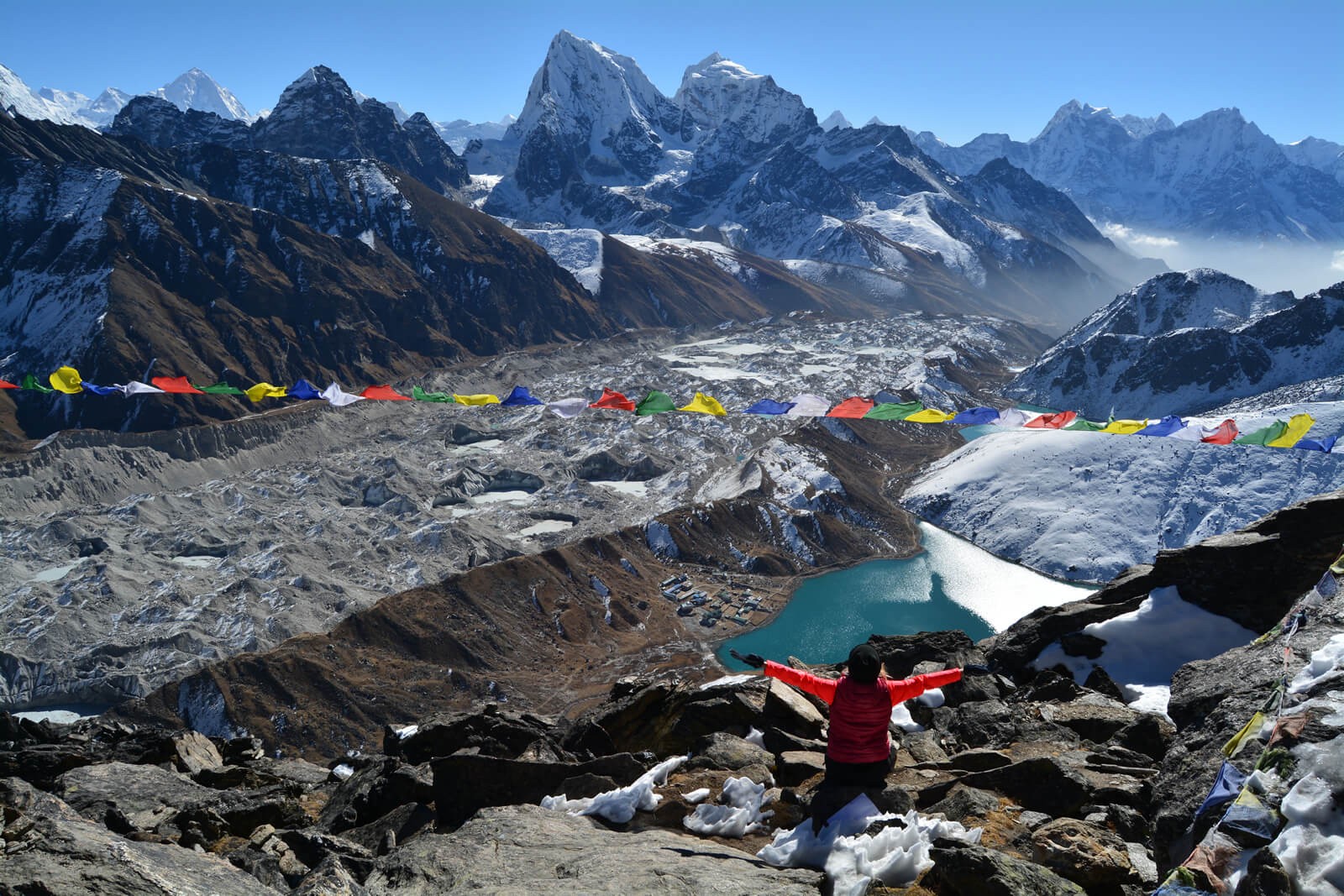
The best substitute trail to the Everest Base Camp Trek is the Gokyo Ri Trek which offers majestic views of the Himalayan peaks as well as the lakes and glaciers. Done in the Everest region in the high Himalayas, the Gokyo Ri trek is of moderate difficulty and does not require experienced trekkers. Rather than taking the more commercial Everest trek, this trek is much more serene and as trekkers often do not take this trail, it is less crowded. This trek is ideal for both experienced trekkers or people who want to get into trekking. The summit of the Gokyo Ri presents you with panoramic mountain views and you can even see four mountains over 8000 meters. The mountains are Mt. Everest, Cho Oyu, Lhotse, and Makalu. People even claim that the view that can be seen from here is far better than that of the well renowned Kala Patthar.
Also Read: 10 Days Everest Gokyo Ri Itinerary & Cost The trek starts with a flight to Lukla from Kathmandu and during the flight, you will be able to see many mountains, valleys, and rivers. Lukla airport is regarded as one of the most dangerous airports in the world. The trail takes you through various Sherpa villages like Namche Bazaar, Phakding and Dole and ascends up to the Gokyo Valley. If you are not short on time then the trek can also be extended and added to the typical Everest Base Camp trek.
Kongde Viewpoint
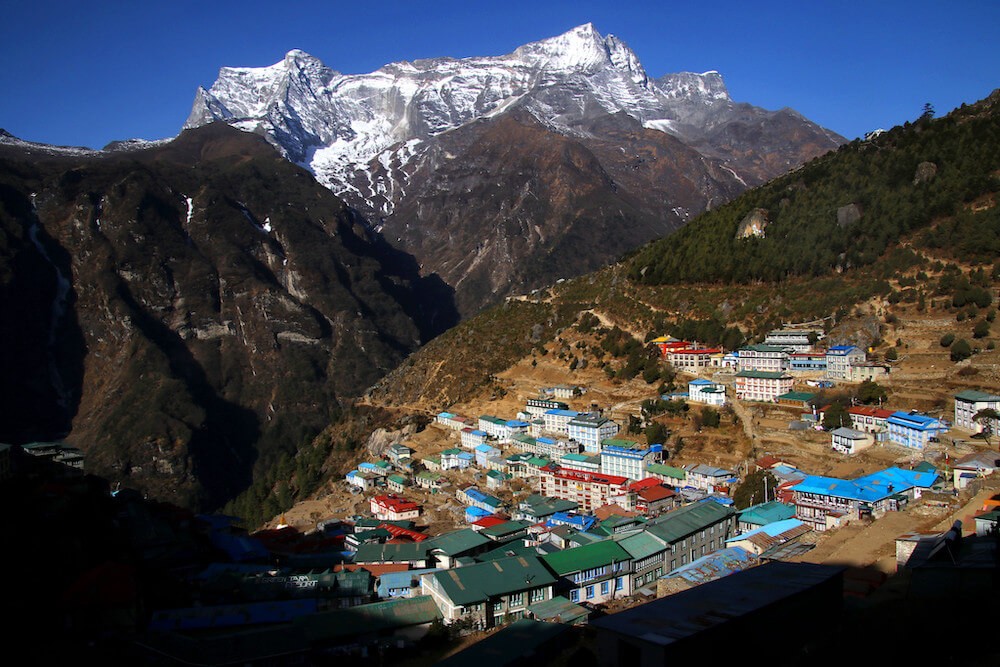
Image Source
Kongde View Trek or the Everest Yeti Trail or the Everest Luxurious Trekking is a trekking trail that offers gorgeous views of the stunning Mt Everest and Everest panoramic views of the surrounding like Namche Bazaar (3450 meters), Kongde (4250 meters), Lukla (2820 meters) and Thame (3700 meters). It takes about a week to complete this trek and along the trail the accommodations will be superb. While there are normal accommodations as well as deluxe accommodations, the choice of where to stay depends on you and the hotels are booked according to your preference. In Kongde, you will find only budget hotels. The major attractions of this trek are the panoramic view of the tallest mountain in the world, Mt Everest, along with other snow-capped peaks such as Amadablam, Kusum Kangaru, Lhotse, Kongde Peak, Nuptse, Taboche, Thamserku and Cholatse. The trekking experience is made exhilarating because of the gorgeous snow peaks.
Also Read: 7 Days Everest Base Camp Trek
This trail leads you along with the Everest base camp trail until you reach Namche Bazaar. It will take 30 to 40 minutes to get to Lukla from Kathmandu by flight and from there you will get to Namche, Thame, Kongde, and then return to Phakding Lukla. This trek is a short trek so it is perfect for mountain lovers. It is recommended that you stay for a couple of days in Kongde so that you can explore the alluring views and so that you can do an excursion to Kongde View Point which is located at an altitude of 4,600 meters. From the viewpoint, you will be able to get a close-up view of the mountains like Everest, Thamserku, Kongde Peak, and Amadablam.
The Kongde View Route trek gets the name of Everest Luxurious trek because of the luxurious hotels that can be found along the trail. In the mountain region, the hotels provide excellent hospitality and are well managed. The rooms provided are nice and clean which have an attached bathroom along with electric blankets, an abundance of variety in meals during breakfast, lunch and dinner and a big dining room. While the accommodation is costlier, the services provided make it worthwhile.
Kala Patthar
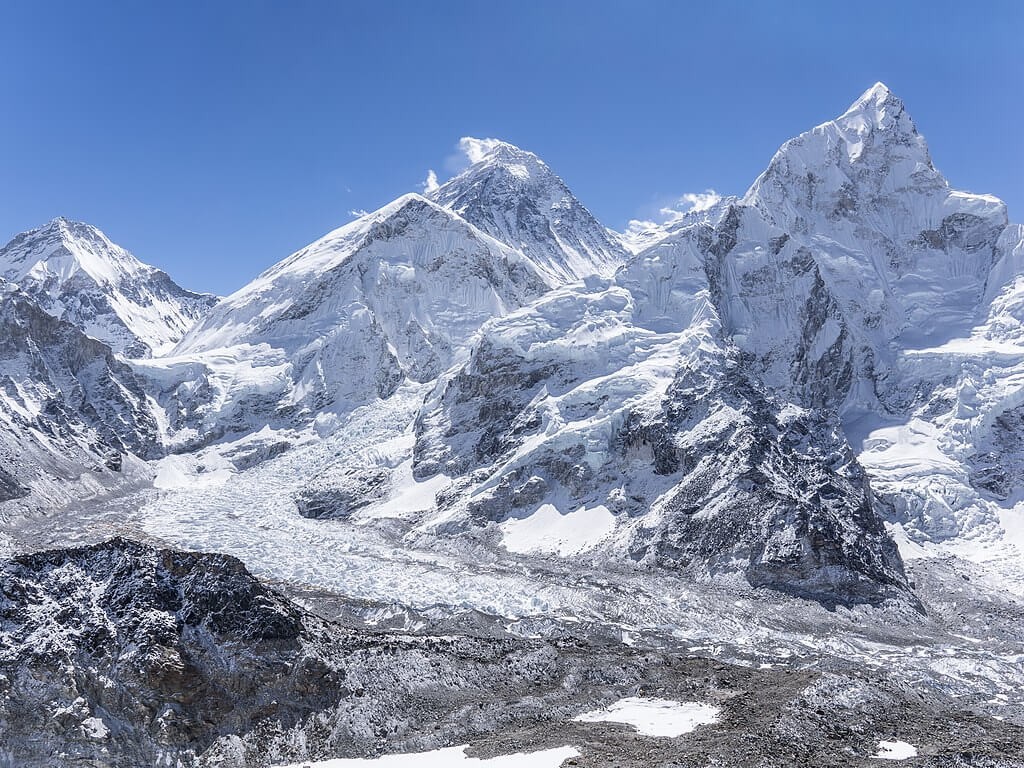
Kala Patthar is made up of two words which when translated in English means “Black Rock''. Located just above Gorak Shep and on the southern ridge of Mt. Pumori in the Khumbu Himalayan range, Kala Patthar is a well-renowned tourist destination. If you wish to see Mount Everest in the closest possible distance then Kala Patthar is the perfect location and as it provides such magnificent views, it is a popular destination in the Khumbu region. Kala Patthar lies north of Gorak Shep and is situated at an altitude of 5,600 meters above sea level. Many trekkers prefer to stay overnight in Gorakshep at the start and end of the Base camp visit. It is the ideal place to have the panoramic views of Mt Everest along with its adjacent peaks, icefall and Khumbu glacier among other things.
Also Read: A Complete Package on Guided Trek to Mount Everest Base Camp
The trail to the peak from Gorakshep is approximately 1.5 kilometers and the difference in height is about 400 meters. To reach the summit, you will have to ascend for 2 to 3 hours and then ascend will be hard. A platform-like landscape develops on the trail above 100 meters from Gorak Shep. While the climb is hard, the view you will see once you reach the top makes it all worthwhile. The builders on the trail up the platform are mostly made of granites that are possibly derived from the higher reaches of the Khumbu Glacier as moraine boulders. The higher you go, the better the views you will get. The top of Kala Patthar provides the most dazzling view of the area including the Everest peak and many more mountains.
Namche Bazaar
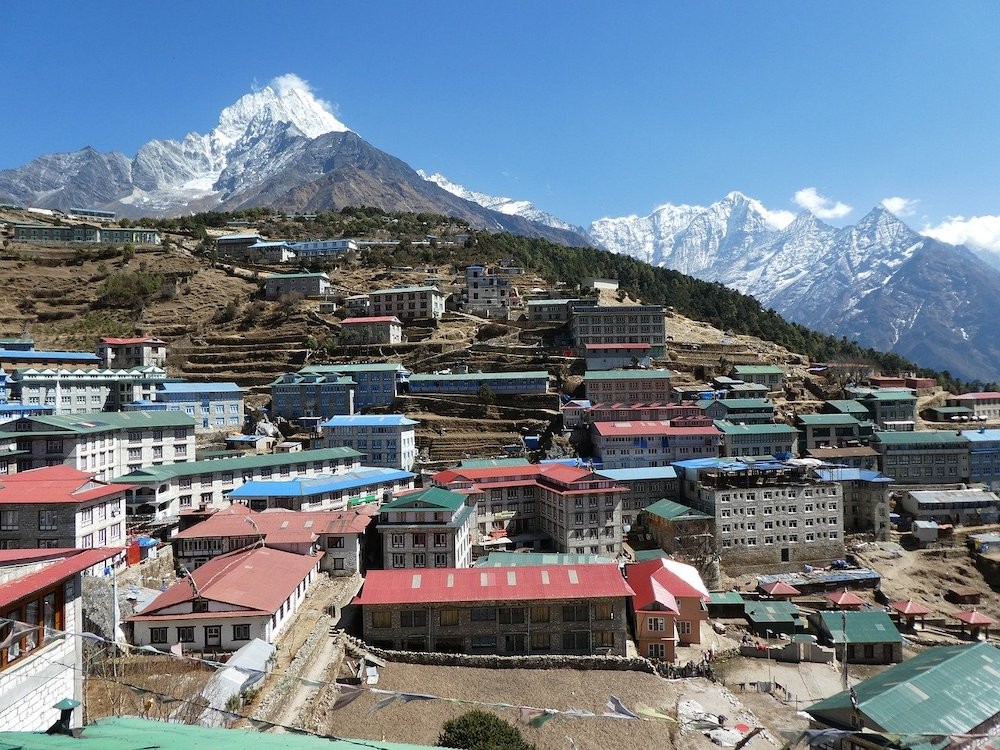
For expeditions to Everest and other Himalayan summits in the area, Namche Bazaar is a staging point situated at an elevation of 3,500 meters. This small, quaint village has now turned into a market town that sells everything from trekking and climbing equipment to Tibetan artifacts and everything else that you might need on your trek. The detailed information about the various climbs in the region, information on the Sherpa lifestyle and memorabilia from different mountaineering expeditions can be found at the park headquarters’ visitor center.
Situated on the slope of an arch-shaped mountain which provides amazing views of the giant Himalayan peaks from anywhere in the valley, Namche Bazaar is a historic trading hub popular for its homemade yak cheese and butter. Sherpas from adjacent villages and traders from Tibet would once gather here to barter goods exhibiting striking traditional arts and crafts and this was once a major trading center of the Khumbu region. While Namche Bazaar has had the taste of modernization, it still holds its ancient traditions, customs, and hospitality.
Also Read: 10 Days Short Everest Base Camp Trek
Sherpas dominate this region and it is one of the famous stops among the Everest route. Here, along with restaurants, hotels and equipment stores, you will also find cybercafé, a regular pub and a place to play pool. It is recommended that you stay for a couple of days in Namche Bazaar to get acclimatized. As acclimatization is a slow process you should walk up and down the locality. A few hours away from Namche Syangboche and there are some Sherpa villages like Khunde, Thame, and Khumjung, you can visit these places to pass time and to help with acclimatization. There is a weekly market fair held in Namche Bazaar every Saturday morning and the market brightens the place. The fair puts emphasis on the center of the town where traders from adjacent villages and Tibet showcase their essential goods and wares to attract customers. Namche Bazaar has now become a major gateway to Everest and a busy tourist hub where trekkers can do some last-minute shopping for essential things.
Tengboche Monastery
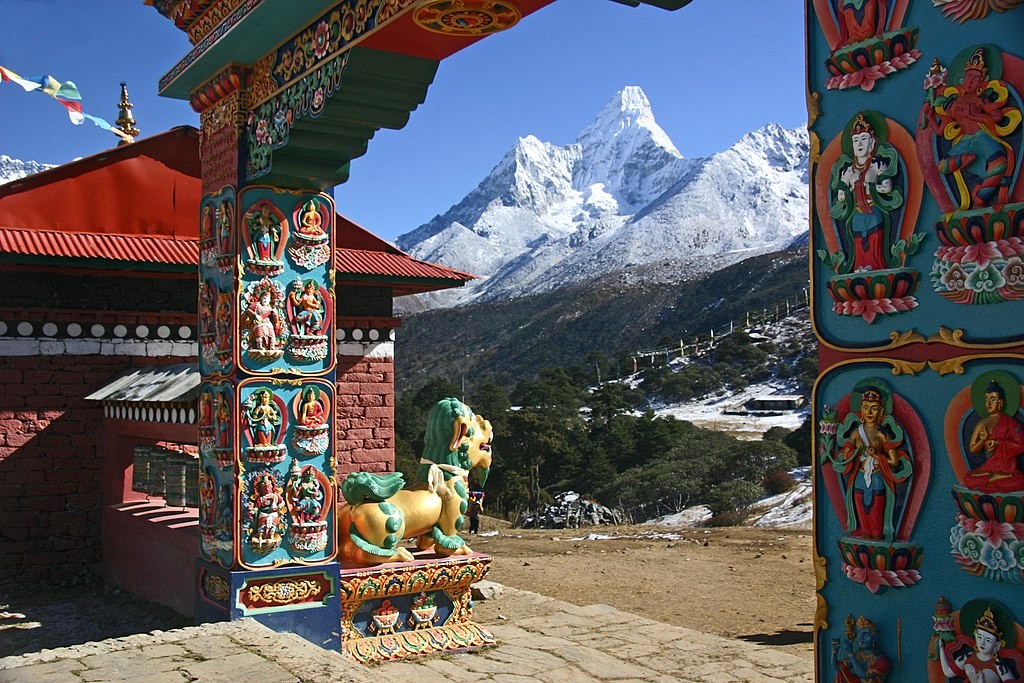
One of the popular monasteries in Nepal, the backdrop view of Mt Ama Dablam that you can see from Tengboche Monastery can not be rivaled by any place. Situated in the Khumbu region, the monastery is the leading Buddhist center and even has a residing Rinpoche who blesses travelers, pilgrims, and mountaineers who pass by the place. Tengboche monastery holds the vibrant Mani Rimdu festival every October. The festival is a mixture of Buddhist festivities along with a spiritual gathering, cultural dances, songs, and retellings of the lives of legendary figures. The visitors are always welcomed to participate in the festivities and many trekkers book their trek in a way that overlaps with the festival. For visitors, the monastery tour is conducted every afternoon. Tengboche monastery lies on a majorly famous trek route to the Everest region.
Also Read: 9 Days Everest Base Camp Trek and Fly Back by Heli
After Namche Bazaar, atop a hill across Imja Khola, the Tengboche monastery is the most common night stop. The monastery is located on a high ridge across the canyon from Khunde and while the original Tengboche monastery burned down in 1989, it was replaced with a more solid structure later. The monastery is surrounded by pines, azaleas and vibrant rhododendrons with a dazzling panoramic view of Lhotse, Everest and Ama Dablam. You will find various rest houses, an abundance of lodges, and spacious camping sites in Tengboche. You can go to Pheriche, Kala Patthar and the hamlet of Gorak Shep from Tengboche and you can also easily reach the Everest Base Camp and the summit of Kala Patthar from here. To not get altitude sickness, it is recommended that you take time to acclimatize.
Khumbu Area is mainly inhabited by Sherpa people and here you can observe their lifestyle, customs, dress up, culture and languages. Most people follow Buddhism in this area and they have a monastery whether it is big or small. The Sherpas cultivate the land and grow potatoes, wheat, some vegetables, and buckwheat. They also raise lots of Sheep, Jhyopchyo, Yaks, and Cows. Along the trail, you might also encounter wildlife such as Snow Leopard, Mountain Goat, Monkey, Blue Sheep, etc.
Virtual Tour of Mt. Everest - Update
The visibility was so clear that for the first time in many years, Mt. Everest was seen on May 16, 2020, from Chobar, Kathmandu Valley. You can experience the following 360 panorama view of Peaks (from left to right): Gang Chhenpo, Urkinmang, Kangshrum, Gurkapo Ri, Dorje Lakpa, Lonpo Gang, Gyalzen Peak, Phurbi Ghyachu, Choba Bhamare, Gauri Shankar, Kang Nachugo, Mt Everest (very faint), Chobutse, Trakar Go.
Source: All Things Nepal
Need Help Planning a Trip to Nepal?
Feel free to contact us , if you need any help planning your trip to Nepal . Our local travel experts will design a custom-made itinerary based on your time, group, cost, and other requirements.
He is a Travel Enthusiast and Writer, who mostly covers the guide to outdoor adventure in the Himalayas of Nepal. He can be your friendly trip planner. Feel free to reach out to him.
Contact Now!
Send an Enquiry
Recent post.
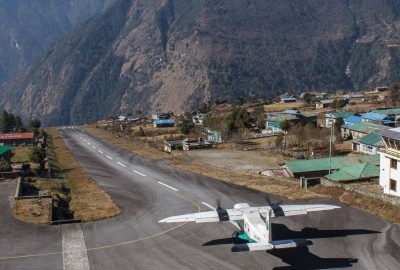
- April 10, 2024

Flying to Lukla - What You Need to Know

- April 09, 2024
How to Drink Clean Water while Trekking in Nepal?
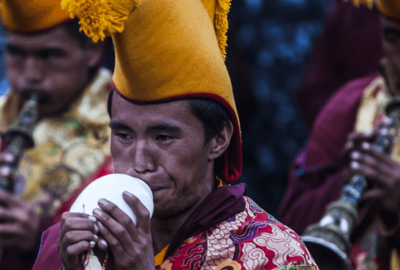
- February 23, 2024
Shey Festival 2024 Dates & Itinerary
- Annapurna Guide
- Bhutan Guide
- City Tour Guide
- Educational Guide
- Festival Guide
- Flight Guide
- Gears Checklist
- Kathmandu Guide
- Langtang Guide
- Manaslu Guide
- Mountain Biking Guide
- Nepal Guide
- Off The Beaten Path Guide
- Peak Climbing Guide
- Trekking in Nepal Guide
Mount Mania Treks & Expedition P. Ltd.
Share this:
Registered with: company registration office, government of nepal, licensed by: nepal tourism board & department of tourism, proud member of trekking agency's association of nepal, general member of nepal mountaineering association.
7 expert tips to sustainably trek to Everest Base Camp

Jan 10, 2022 • 9 min read
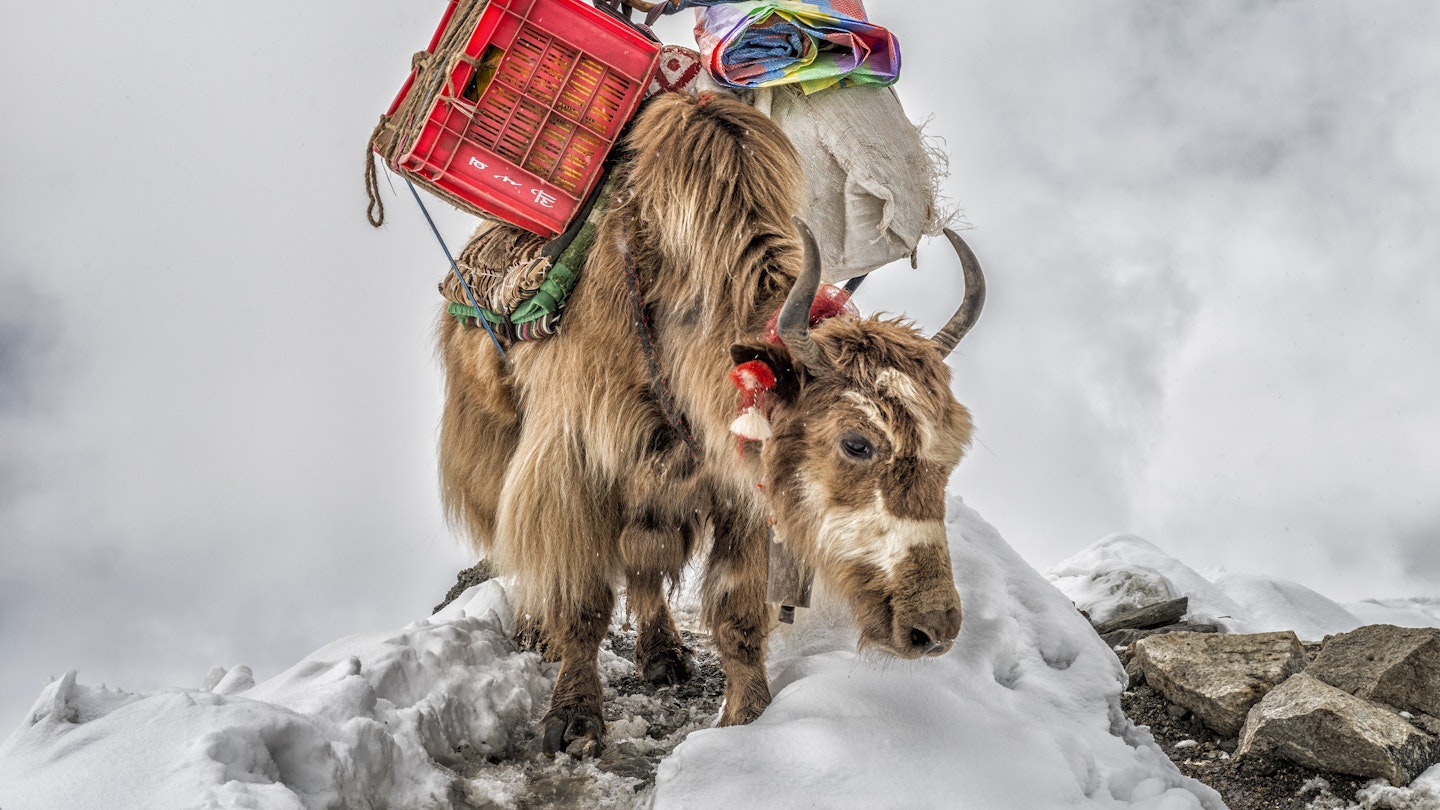
Everything you need to know about sustainability as you plan your two-week trek © Westend61 / Getty Images
Taking in mountain monasteries, mighty glaciers and up-close views of the world’s highest peak, the trek to Everest Base Camp in Nepal is one of the world’s top adventures. But it can get pretty crowded on the roof of the world.
At the height of the trekking season, dozens of flights drop in daily to the precariously balanced airstrip at Lukla, starting point for the two-week trek to the mountaineers’ camp at the foot of Mt Everest – or Sagarmatha, as it’s known in Nepal.
Along the route, an efficient production line has been established to deliver trekkers to their destination, with lodges offering hot showers, internet access, mobile phone charging, apple-pie desserts and bottled beer. It’s a business that has brought prosperity to mountain communities, but at a cost to the pristine environment of the Himalaya.
The good news is that travelers can do a lot to make their trek to Everest Base Camp more sustainable. Here's how.

Take a less-crowded route to ease the traffic
Photos of the gridlock at the summit of Everest during the 2019 climbing season pushed overtourism on Everest to the top of international newsfeeds, but most of the estimated 40,000 people who visit Everest Base Camp (EBC) every year are trekkers, who bring an estimated US$300 million to the Nepali economy every year.
The crowds have created huge demand for resources, and significant problems with rubbish. Discarded plastic water bottles and food wrappers dot the landscape and hillsides stand denuded of trees, stripped to provide firewood to heat meals and water for the trekking masses. It’s a sad state of affairs for one of Nepal’s oldest national parks .
You could always trek elsewhere, but you can also ease the pressure on the Everest region by following less crowded trails . The Chhukung Valley east of Pheriche, the Bhote Kosi Valley west of Namche Bazaar, and the Dudh Kosi Valley north of Namche Bazaar at Gokyo all see fewer trekkers than the main approach route to EBC.
You can link them all on the spectacular and challenging Three Passes trek, and there’s plenty you can do to help the Himalaya when you get here.
Read more: Everest Base Camp trek in detail: alternative routes & side trips

Pick up a collection bag to collect waste
The Sagarmatha Pollution Control Committee (SPCC) was established in 1991 to manage the growing waste problem in the Everest region and has done its best to improve the conditions on the mountain. Volunteers removed 10.3 tons of rubbish from the slopes of Everest and the approach to Everest Base Camp in 2019, making just a small dent in Everest’s waste mountain.
To help, the SPCC has erected more than 100 rubbish bins at rest points on trekking trails in the Everest Region. “Please use these bins while trekking,” urges Yangji Doma Sherpa from the SPCC. “And take batteries and medicines back to your own country as we don’t have a proper management system for this type of waste.”
“It’s very helpful if trekkers remind their guides and porters not to litter on the trails while trekking with them,” advises Yangji.
Picking up litter while you trek will also help, says record-breaking Nepali mountaineer Nirmal Purja, whose ascents were the subject of the hit Netflix documentary 14 Peaks: Nothing is Impossible . “The most important thing that every trekker can do is take a litter bag. You can put any rubbish in there, however big or small, and if you bring it down to Kathmandu , it can be recycled.”
Read more: Nirmal Purja: The Nepali mountaineer reclaiming the Himalaya
One easy win is to join SPCC’s Carry Me Back campaign to remove empty aluminum cans and polyethylene terephthalate (PET) drinks bottles from the foothills. Travelers can pick up collection bags from the SPCC in Namche Bazaar and drop off bags full of cans and bottles at Lukla Airport when leaving the Everest region.

Eating local matters a lot here
It also pays to consider what you eat. “We advise trekkers to eat local foods as much as possible,” says Yangji Doma Sherpa. “Imported food items are usually packed in plastic, tin or glass, adding to the volume of waste in the region. We also suggest that trekkers use their own water purifying system or drink boiled water instead of bottled water during their trek.”
It’s sound advice – single-use plastics have been banned on Everest since 2020, but bottles more than 30 microns in width are still allowed, and the legacy of the many years before the ban can be seen in stream beds and undergrowth across the Himalaya.
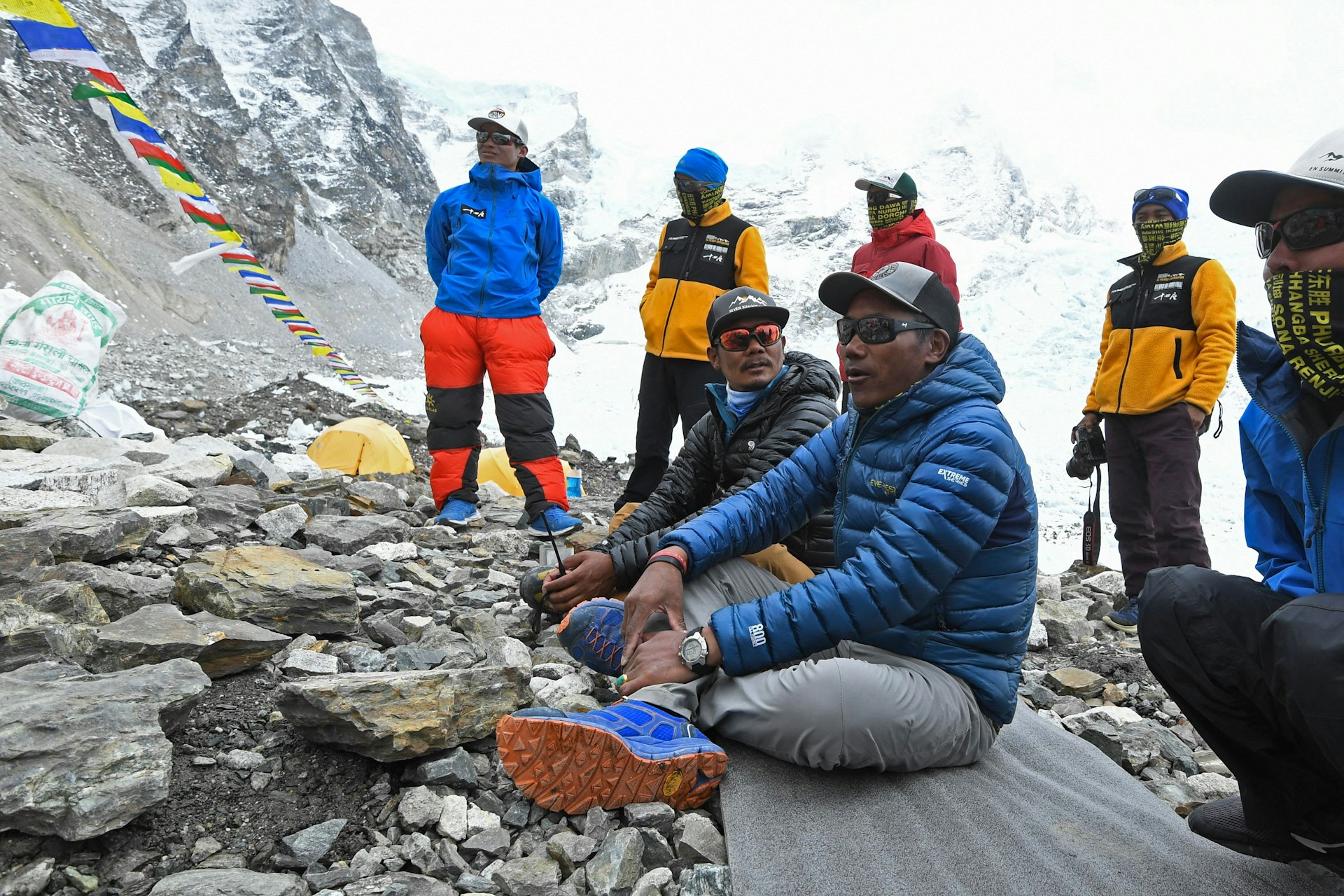
Be mindful of your guides and their welfare
Trekking has brought wealth to the Everest region but also problems, including increased demand for limited resources and overdependence on tourism. Porters, guides and lodge owners often face severe financial difficulty during downturns in tourism, such as the one caused by the COVID-19 pandemic.
Ian Wall, CEO of the Kathmandu Environmental Education Project , urges trekkers to consider their responsibilities towards the people who help them on the trails. “Remember guides and porters are human beings. It’s a fallacy that they don’t suffer from altitude or hypothermia problems, so make sure that they have the right clothing, warm accommodation and appropriate food.”
“Also make sure they have insurance. If things go wrong, it is the guides and porters who make sure you get the appropriate help, so do the same for them.”
Responsible trekking agencies provide insurance for their porters and guides, following the guidelines on fair wages and life and income protection insurance laid down by the Trekking Agents Association of Nepal and Nepali trade unions.
If you are hiring a guide or porter independently, ensure their daily wage is enough to cover insurance as well as their fees and living costs, and insist that they take out coverage (Nepali insurance companies have dedicated policies for trekking industry workers). Do not underestimate the effect that an injury or loss of income can have on the families of porters and guides.
When choosing support staff, keep the concept of a fair wage in mind, rather than looking for the cheapest price. “Whether you’re hiring porters or guides directly or through a trekking agency, the most important thing is to ensure that they’re fairly paid,” agrees Abhi Shrestha of Nepali agency Rural Heritage , who has decades of experience of working with rural communities.

Consider the way you contribute to the locals
Many trekkers want to help local people while trekking, but there’s a right way and wrong way to go about this. Handing out gifts at random while you trek is unlikely to make a lasting difference, compared to making donations through a local or international charity or community project.
“Over the years trekkers have delighted in giving children pens, money and chocolate,” cautions Ian Wall from KEEP . “Over time, this has generated a culture of begging, especially in remote areas. This is not good for children and it can spoil the experience of interacting with local people.”
“Instead, give your donations of books, pens, pencils etc to local schools or the village Ama Group (run by local mothers) so your donation can benefit a whole class or school of children, not just one.”
You could even sponsor a Nepali child throughout their education through organizations such as Plan UK and Save the Children . “Education is the key,” insists Nirmal Purja. “Rather than donating all this stuff, donating an education could change a whole life.”
Donating trekking gear that you don’t need any more at the end of the trek can also be helpful. It’s shocking how many porters cross the Himalaya in flip-flops while their clients wear $300 trekking boots. KEEP is one of several organizations that distributes donated gear to mountain communities.
Read more: How to choose a responsible travel operator
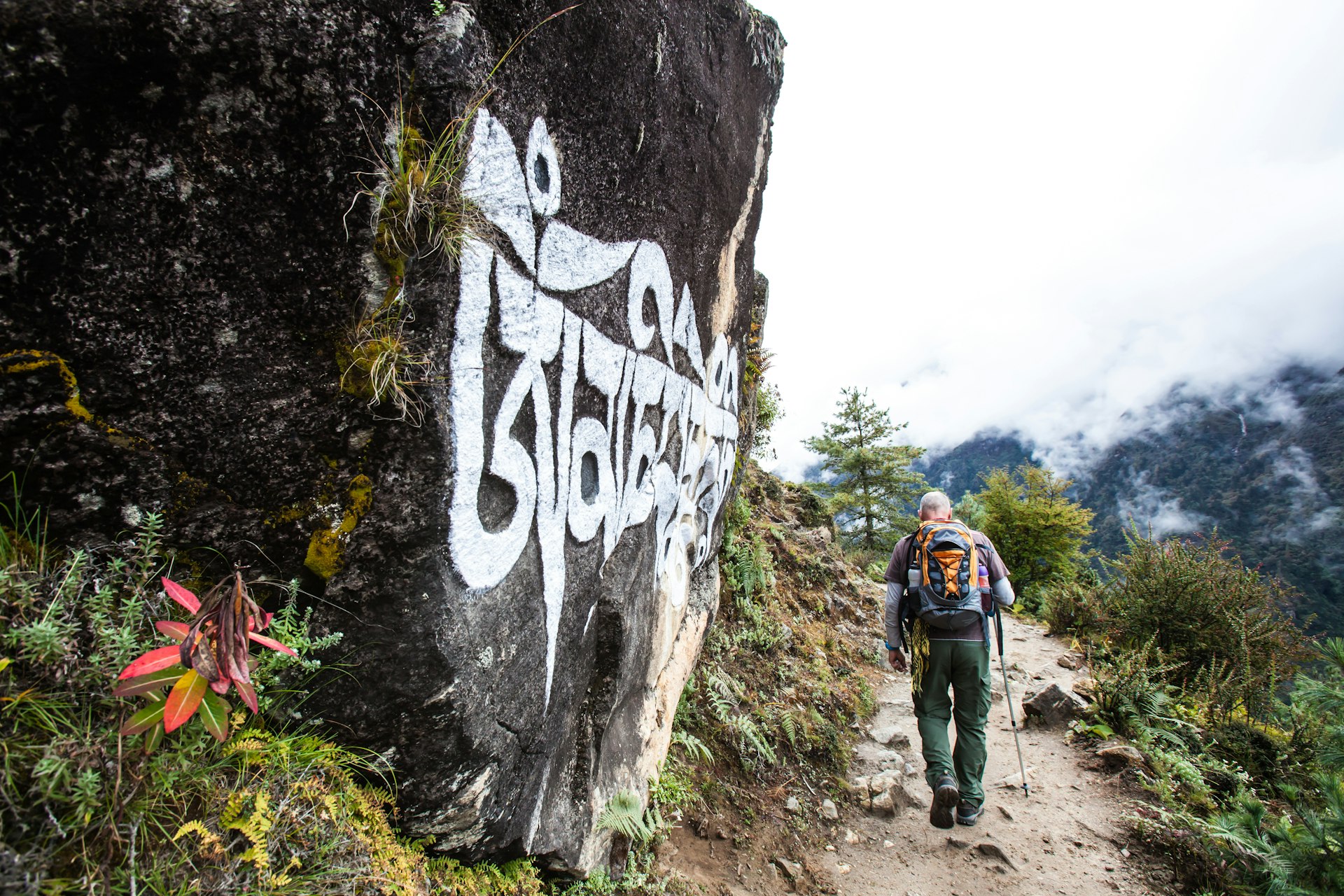
Reduce your carbon footprint by taking the long route
One of the best things you can do to help the Everest region is to reduce your carbon footprint. The Himalayan region is particularly vulnerable to climate change, with melting glaciers swelling mountain lakes to dangerous levels, glacial lake outburst floods are becoming increasingly common, threatening mountain communities, hydroelectric plants and infrastructure downstream.
When it comes to practical steps, the first thing to consider is your air travel. With the expense and time commitment involved in traveling overland to Nepal, most people will continue to reach Nepal by air, but cutting out domestic flights is one way to reduce your carbon footprint.
The flight to Lukla takes less than 30 minutes, but it’s possible to trek up to Lukla following a week-long trail that used to be the main approach route for mountaineers, starting at Shivalaya near Jiri – accessible by bus from Kathmandu.
An alternative route starts at Tumlingtar, nine days east of Lukla, which also marks the starting point for treks to Makalu, the world’s fifth highest mountain. On either route, you’ll see a different side to the Himalaya, passing through villages that are more focused on farming than the trekking industry.
Remember your firewood footprint, seek out the solar
Reducing the amount of firewood you are responsible for is another positive step. Avoid firewood-heated hot water and eat the same food as lodge owners are cooking for themselves, rather than insisting on a different meal. The communal stove that keeps lodges warm is less of a worry – it’s usually powered by yak dung.
“If you are camping, insist on using kerosene for cooking, and if you stay in lodges, always have a quick look at the roof before you book in,” recommends Ian Wall at KEEP. “Are they using solar energy to heat water? If not, consider moving on to the next lodge.”
Growing numbers of lodges have solar panels and many are turning to LPG gas for cooking, but if the only option for an overnight stay is a lodge that uses firewood, wash in cold water or wait till you reach a lodge that has solar power. Nobody is going to judge you for not smelling like a rose garden if you’ve been walking up mountains all day.
You might also like: The Nepali mountaineer reclaiming the Himalaya How to plan your dream trip to the Himalayas How to trek to Everest Base Camp
Safety recommendations and restrictions during a pandemic can change rapidly. Lonely Planet recommends that travelers always check with local authorities for up-to-date guidance before traveling during COVID-19 .
Explore related stories
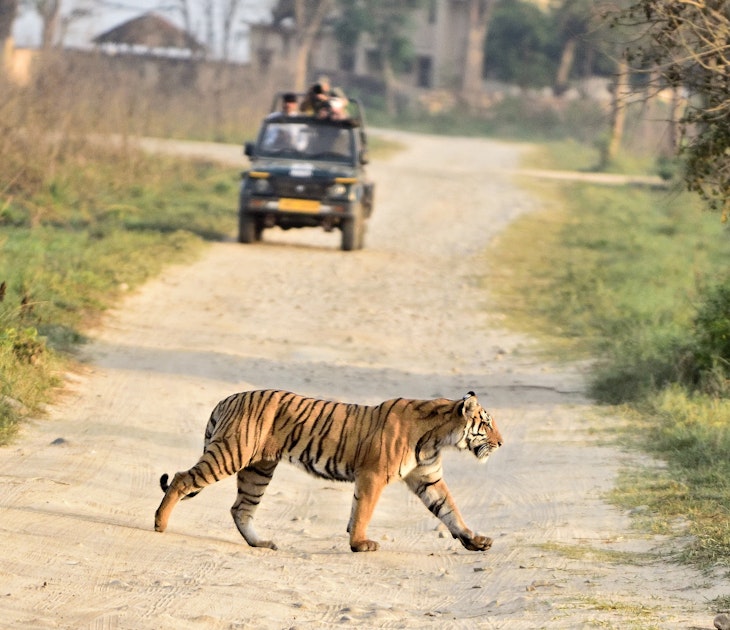
Photography
Apr 16, 2024 • 13 min read
There are as few as 3900 tigers left in the wild. Here’s where and how to spot one of them.
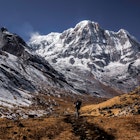
Feb 22, 2024 • 3 min read
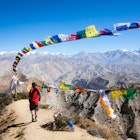
Dec 23, 2023 • 7 min read
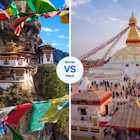
Dec 20, 2023 • 7 min read

Sep 24, 2023 • 7 min read
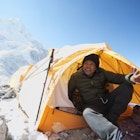
Jun 20, 2023 • 10 min read

Mar 14, 2023 • 4 min read

Nov 30, 2022 • 3 min read

Jun 7, 2022 • 6 min read
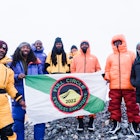
May 23, 2022 • 6 min read

Explore an extraordinary adventure tour to the iconic Mount Everest with our carefully curated collection of the 14 best Mount Everest tour packages . Created by local travel experts who know the region intimately, these tours offer an immersive experience in the heart of the majestic Himalayas . From thrilling treks to breathtaking helicopter tours, we have options to suit every adventurer's desire. Join us as we unveil the wonders of Everest and create unforgettable memories in the lap of nature's grandeur.

Everest Base Camp Trek with Helicopter Return

Everest Base Camp Helicopter Tour

Gokyo Valley Trek with Helicopter Return - 8 days

Everest Base Camp Trek - 14 Days

Everest Base Camp Trek 5 Days

Everest Base Camp Trek by Road - 16 Days

Everest View Helicopter Tour with Kalapatthar Landing

Jiri to Everest Base Camp Trekking

Luxury Everest Base Camp Trek - 12 Days

Everest Three Passes Trek

Short Everest Base Camp Trek - 7 Days

Everest View Trek - 8 Days

Everest Circuit Trekking - 17 Days

Gokyo Lake Trek - 11 Days

Gokyo Chola Pass Trekking - 14 Days
Mount everest tour packages facts.
Everest region lets you encounter the highest peak in the world, Mount Everest. Also, the supporting mountains’ panorama is much more mesmerizing. Everest is a paradise for adventure and nature lovers. Mount Everest is the most elevated mountain peak on the Earth above sea level with an ebb and flows official height of 8848 meters (29,029 feet).
It is known as Sagarmatha in Nepali and Chomolungma in the Tibetan language. Sagarmatha is combined with two words, ‘Sagar’ and ‘Matha’, which means ‘sky’ and ‘forehead’. Uniting both, the word Sagarmatha refers to as ‘Forehead of the Sky. It is likewise a worldwide outskirt in China and Nepal.
Mount Everest Tour Difficulty Level
The Mount Everest tours and treks vary in difficulty levels, ranging from easy to moderate. The level of challenge depends on the specific itinerary and trekking route chosen.
Mount Everest Tour Duration
The duration of Mount Everest treks and tours can range from 1 day to 20 days, depending on the chosen itinerary and trekking objectives. Shorter tours, such as the Everest Base Camp Helicopter Tour , provide a condensed experience, while longer treks allow for a more comprehensive exploration of the region.
Mount Everest Tour Environment
The trekking trails to Mount Everest are naturally beautiful, featuring rivers and several suspense bridges that add excitement to the journey. The trails can be moderately busy, but they are well-serviced with tea houses and lodges, providing necessary amenities and accommodations for trekkers.
Max Altitude in Mount Everest Tour
The highest point reached during Mount Everest tours is 5,364 meters at Everest Base Camp (EBC) and 5,643 meters at Kala Patthar. These altitudes offer stunning panoramic views of the surrounding peaks, including Everest itself.
Mount Everest Tour Accommodation
During the Mount Everest tours, accommodation options vary depending on the trekking route and location. Along the trekking trails, there are basic lodges, mid-level tea houses, and luxury lodges up to Lobuche that may offer western toilets. At the higher altitude of Gorekshep, the accommodation is more basic with simple tea houses.
Mount Everest Tour Best Weather
The ideal time to embark on Mount Everest treks is during the months of March to May and October to November. These periods offer favorable weather conditions, with clear skies and stable temperatures. However, other dry seasons can also be recommended for Everest treks.
Mount Everest Tour Transport To/From
To reach the starting point of the Mount Everest treks, trekkers typically take a plane or helicopter flight to Lukla Airport (2,860m). From there, transportation options include jeeps to Sallery or Phaplu Airport, depending on the chosen itinerary.
Everest Entry Documents
To participate in Everest treks, trekkers are required to obtain certain entry documents, including:
Trekkers' Information Management System (TIMS) Card : This card is a registration document that provides trekkers' information and helps in maintaining trekking records.
Sagarmatha National Park Permit: This permit is necessary to enter Sagarmatha National Park, which is home to Mount Everest and its surrounding region.
Additionally, there are no special permits required specifically for the Everest Base Camp trek . However, there may be local government fees of Rs. 2000 to 5000 per person, which are subject to change and should be confirmed with the local authorities.
These Mount Everest tour facts provide essential information for trekkers and adventurers planning to explore the wonders of Everest and its breathtaking surroundings.

Binod Sapkota
We use cookies to ensure that we give you the best experience on our website.

Mount Everest Tourism
- Mount Everest
- Things to do
- Best time to visit
- How to Reach
- Tourist Map
- within 25kms
- within 50kms
- within 100kms
- within 150kms
- within 200kms
- within 250kms
- within 300kms
- within 500kms
Explore Places to Visit Near Mount Everest by Type
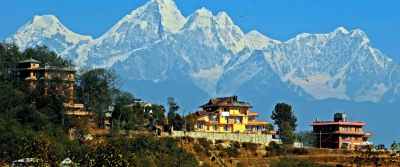
Other Suggested Reads for Mount Everest
- Things to do in Mount Everest
- How to Reach Mount Everest
- Best time to Visit in Mount Everest
- Mount Everest Tourism History
- Food in Mount Everest
- FAQS about Mount Everest
- Mount Everest Tourist Map
Advertisement
How has Mount Everest tourism affected Nepal?
- Share Content on Facebook
- Share Content via Email
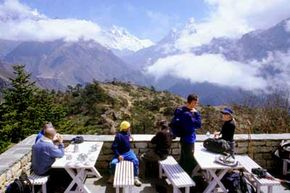
Since Nepal ranks among the poorest countries in the world, tourism is a vital economic lifeline. Comprising about 4 percent of the country's gross national product, the industry pulls in around half a billion dollars annually [source: CIA World Factbook]. Although the country has a rich culture and religious tradition, the best-paying and longest-staying tourists travel there for the rock star of the Himalayan mountains -- Mount Everest.
Although only slightly larger than the state of Arkansas [source: CIA World Factbook], the Himalayas that curve across the length of Nepal are home to eight of the 14 tallest mountains on the globe. The government takes advantage of this fact because when it comes to Everest -- or Sagarmatha in the native tongue -- people are willing to shell out serious dough.
What do these dollars mean for Nepal? Steady income. Mount Everest climbers have been a dependable money source, travelling to the country despite the decade-long Maoist uprising of mostly rural farmers who followed an Asian strand of Marxism, which came to a cease-fire in 2007. In climbing season alone from March to May, the population of the Khumbu region at the base of Mount Everest soars from around 40,000 to 700,000 [source: McDougall ].
But thousands of those seasonal residents are Nepalese workers from other areas who migrate in for tourism-related employment. In fact, locals have decried recent calls for Mount Everest to be restricted due to environmental damage because so many rely on tourism to provide a majority of their annual income. For example, sherpas, or mountain guides, in particular can make upwards of $2,000 per expedition, far exceeding the average Nepalese annual income.
Just how much are people paying for a glimpse or a hike up Mount Everest? Go to the next page for glimpse at the cost to visit the roof of the world.
Everest's Economic Benefits
Everest and the environment.
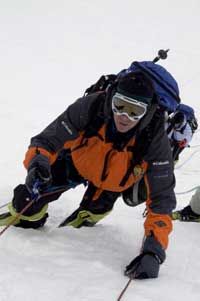
The easiest way to get a grip on how much money Nepal takes in from tourism is to take a close look at what the Everest tourist spends. You might be surprised how quickly the numbers climb.
If you're one of the 25,000 annual Everest tourists, getting into Nepal for more than a three-day stay will only run you $30 [source: Nepal Tourism Board ]. But that's just the beginning of the tab. If you want to climb one of the major Himalayan mountains, you need a government-issued climbing permit. Although you can hike more than a hundred of the smaller peaks for free, who wants to play in the sandbox when the beach is next door?
Mountains taller than 21,300 feet (6,501 meters) are premium property. That base height costs $1,000 and increases $500 for every 1,640 feet (500 meters). Since Mount Everest stands at a staggering 29,029 feet (8,848 meters), the permit will run around $3350.
Now that you've got your permit, you're ready to start climbing, right? Not quite. If you want to take the most common route to the top of Everest, you'll owe the Nepal government a $25,000 royalty fee for yourself or up to $70,000 for a seven-person expedition crew [source: Nepal Mountain News ].
Can't afford it? Wait until the off-season. To increase Everest tourism during the colder months of the year, the Nepalese government announced in 2007 that it was trying to cut royalty fees for people interested in climbing Everest during fall and winter. If the proposed plan goes into effect, a September through November climb will be 50 percent off the regular price and one from December to February will be 75 percent lower. If you're lured into the sales price, Nepal winds up raking in off-season tourism money.
Once you get to the Khumbu region, there are other expenses as well, such as lodging, food and any additional supplies that aren't covered in your expedition fees. In addition to trekking businesses, more than 300 hotels and lodges have sprung up from the tourism, many of which are owned by the local Sherpa people [source: Reid and Kendrick]. Some people turn their homes into tea houses , or overnight lodging, for tourists who want a more "authentic" Himalayan experience. Hundreds of Nepalese men from other areas swarm into Khumbu as well, hoping to get work as porters on expeditions, hauling trekking equipment up Everest slopes on their backs. Even the high-altitude Buddhist monasteries draw income from passing tourists.
However, tourism carries its own price as well in the form of environmental destruction. Read on to learn about the environmental repercussions of Mount Everest tourism.
Here are some tips from the Nepal Tourism Board to help you follow the country's customs:
- When you greet Nepalese, say, "Namaste."
- Take your shoes off before entering people's homes.
- When eating, do not use your eating hand to touch anything other than your food and utensils.
- Only walk around temples in a clockwise direction.
- Don't engage in public displays of affection.
- Don't touch anything with your feet.
[source: Nepal Tourism Board ]
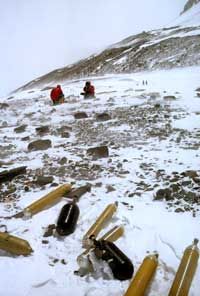
The Mount Everest rush started after Edmund Hillary and Tenzing Norgay made it to the top in 1953. Before that, Khumbu's environmental state was far healthier. But with thousands of pairs of feet pounding its footpaths for decades, many believe that Sagarmatha needs a rest.
Global climate change alone has affected Everest's geography, as some of its glaciers have retreated as much as three miles (4.8 km) in the past 20 years [source: Is global warming destroying Mount Everest?.
Human activity is the source for the most visible damage being done to the area. Although Khumbu is protected as the Sagarmatha National Park, challenges remain for curbing waste left behind on the trials, especially disposable water bottles and food cans. Literally tons of trash has been cleared from the Everest Base Camp, but groups such as Kathmandu Environmental Education Project remain hard at work teaching climbers about low-impact trekking.
While trash remains problematic, energy sources for feeding and housing thousands of tourists each year are growing scarce. When Sherpas first settled in the Khumbu valley in the 1500s, the forests were lush with plant life. Today, the tree line continues to descend to lower altitudes, as firewood is burned for heating, cooking and hot showers. Environmental groups have urged villagers, business owners and climbers to use kerosene instead of firewood, but the conversion is a slow process. The rate that tourists consume energy is also far higher than Sherpas since they are more accustomed to it in their more industrialized nations.
Although the late Edmund Hillary and others have urged the Nepalese government to ban Everest access for a while to allow for cleanup and more reforestation efforts, there are no signs of government compliance. In fact, the Nepal tourism board furiously refuted an international news story that Nepal was shutting off base camp access for 10 days during the spring of 2008 to allow for a torch run for the 2009 Summer Olympics in Beijing . And the plan for offering lowered rates during the off-season indicates its determination to not only keep the mountain open to the public but actually attract more tourists.
As you can see, Mount Everest tourism has created a difficult puzzle for Nepal. While it's a reliable source of income for some of the poorest people in the world, its very success could also be paving a path to its destruction. For more information about Mount Everest and Nepal, go to the links on the next page.
Lots More Information
Related articles.
- How Climbing Mount Everest Works
- Is global warming destroying Mount Everest?
- How Adventure Travel Works
- How Ecolodges Work
More Great Links
- Nepal Tourism Board
- The Himalayan Trust
- CBC News Online. "In Depth: Mount Everest." May 9, 2006. (March 21, 2008)http://www.cbc.ca/news/background/mount_everest/
- Central Intelligence Agency. "Nepal." The World Factbook. Updated March 6, 2008. (March 20, 2008)https://www.cia.gov/library/publications/the-world-factbook/geos/np.html#Geo
- Davies, Elizabeth. "Mount Everest's appeal grows despite violent unrest in Nepal." The Independent. April 29, 2005. (March 20, 2008)http://findarticles.com/p/articles/mi_qn4158/is_20050429/ai_n14605253
- Jones, Finn-Olaf. "Tourism Stripping Everest's Forests Bare." National Geographic Traveler. Updated Aug. 29, 2003. (March 20, 2008)http://news.nationalgeographic.com/news/2003/08/0829_030829_travelereverest.html
- MacDonald, Mia. "The roof of the world: tourism in Nepal strikes a delicate balance." E: The Environmental Magazine. March - April, 2004. (March 20, 2008)http://findarticles.com/p/articles/mi_m1594/is_2_15/ai_114327247
- McDougall, Dan. "Should Everest be Closed?" The Observer. Oct. 8, 2006. (March 20, 2008)http://www.guardian.co.uk/world/2006/oct/08/conservation.environment
- Nepal Mountain News. "Royalty Fees of Various Peaks of Nepal." (March 20, 2008)http://www.nepalmountainnews.com/royalty_fees.php
- Nepal Tourism Board. "General Information." (March 20, 2008)http://www.welcomenepal.com/brand/travel_general.asp
- Reid, T.R. and Kendrick, Robb. "The Sherpas." National Geographic. May 2003. (March 17, 2008)
- Rosen, Elizabeth. "Somalis Don't Climb Mountains: The Commercialization of Mount Everest." The Journal of Popular Culture. Vol. 40, No. 1, 2007. (March 17, 2008)
Please copy/paste the following text to properly cite this HowStuffWorks.com article:
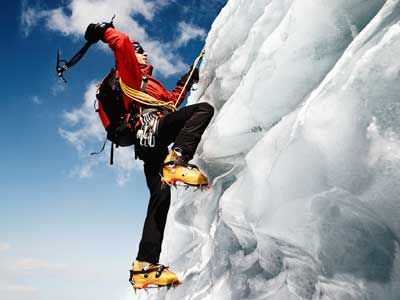
- Outdoor Activities
- Destinations
- Book Hotels, Flights & Cars
- Advertise With Us
- Cookie Settings
Copyright © 2024 MapQuest Holdings LLC, a System1 Company
Ego-tourism and Mt. Everest: The hidden costs of the highest climb
Anyone can try to climb mt. everest. that's the beauty of the goal — and one of the problems, by lucinda bradlow.
In January, Polish hiker Tomek Mackiewicz and his French climbing partner Elisabeth Revol set off to climb Nanga Parbat, the Pakistani mountain known as the “killer mountain.” In the middle of winter. It wasn’t until descending from the 8,126 meter summit that the two climbers fell gravely ill with acute mountain sickness, snow blindness and frostbite. Revol was rescued the next day, but conditions prevented Mackiewicz’s rescue and he remains on the mountain, presumed dead. Much of the media coverage of the event questioned the Pakistani government for requiring full payment of the helicopter rescue mission and included a link to a Go Fund Me page set up by the climbing community for people to donate to the rescue.
Cold-weather climbing is a form of extreme climbing. Like free climbing, or climbing without oxygen, it is another way of making the challenge harder and more admirable. With temperatures reaching below negative 40 degrees Fahrenheit, treacherous winds and limited visibility, high-altitude climbing in winter is ludicrously dangerous.
Globalization and technology have created new opportunities for adventurers to take on new extremes. We can heli-ski or tow-in surf or deep sea dive. We can seek to go faster, higher, deeper and further. And we can be the first to do it in extreme heat or extreme cold, or as the first snapchatter . Soon, for enough money, we will be able to go to the moon or Mars .
But what are the consequences of these extreme adventures?
As the highest peak in the world, the impact of the ever-increasing number of tourists attempting to ascend Mount Everest gives insight into the challenges of this type of tourism. What used to be the domain of a handful of professional climbers has now been commodified and made accessible to a much bigger group of people.
The Everest conga line raises the question – in democratizing the mountain, has the industry birthed a type of neocolonial tourism in which any experience can be purchased, regardless of the consequences? Or are the motivations and repercussions irrelevant, if the industry is fueling much needed development and opportunity for a region? How can the tourism industry reconcile these issues as it strives to be bolder, higher, more Instagramable?
While encouraged, no actual climbing experience is required to attempt to summit Mount Everest.
Every climbing season, commercial tour operators hire local climbers to fix ropes from base camp to the summit along the two main routes on the mountain — one on the Nepalese south side and the other on the Tibetan north side. Climbers can clip onto these ropes and pull themselves along the route using a clamping device called a jumar . “During the acclimatization period at Base Camp, Nepali guides teach clients how to use the fixed ropes and how to react in an emergency,” said Gokul Sapkota, the owner of trekking company Outshine Adventures .
In addition to the fixed-rope system, climbers are usually accompanied by a team of local guides and porters ( commonly known as Sherpas , even though only some actually belong to the Sherpa family) who carry their gear and supplemental oxygen and set up camp prior to the climbers' arrival. Drugs such as dexamethasone, which minimize the risk of lethal high-altitude illnesses, are now widely available (although it can also be argued that their use creates a false sense of security and encourages greater risk-taking behavior).
Combined, these measures effectively mean, as Sapkota explains, that “anyone can climb Mount Everest.” And tourists are taking up the challenge. The New York Times reports that in a typical year, about 1,200 people attempt to summit the mountain from both sides. In 2017, the Nepali government issued 371 permits to scale the mountain. At $11,000 a permit, tour operators usually work together to form groups of six to eight per permit, to share the price. With only a short window of opportunity between April and May to make the trek, that’s a lot of people on the mountain.
A mountain of multitudes of trekkers with varying degrees of skill and ability is incredibly dangerous. “ I have had clients who summited Mount Everest who could not climb Mera Peak [8,000 feet lower],” said Ang Tendi Sherpa, a guide with Outshine Adventures. “Inexperienced climbers get into trouble if another climber falls, or is ill, or they have to spend longer in the cold or in the altitude,” said Sherpa, all of which become more likely on a crowded mountain.
There are also serious environmental consequences of an over-crowded mountain. Used oxygen tanks, trash and even dead bodies line the trail. Some climbers have argued that the foot traffic, combined with the damage from the 2015 earthquake, has caused irreparable damage to the mountain.
Although “anyone” can try, climbing Mount Everest is a very dangerous expedition.
It is 29,029 feet high, making oxygen levels 33 percent of those of sea level. It is below freezing and climbers are at the mercy of the elements. There are crags and crevices and opportunities to fall. It is not a foolproof adventure, and every year the mountain claims a new set of victims of all levels of experience.
In 2017, ten people died on the mountain. Roland Yearwood , a doctor from Alabama who had survived the 2015 earthquake on the mountain, died from unknown causes in his second attempt. Both Yearwood and Australian climber Francesco Enrico Marchetti, who died of altitude sickness as he approached the summit, were reported to be experienced climbers.
Later in the season, four bodies were found in tents at Camp IV, in the area known as the “death zone,” where there is very little oxygen or atmospheric pressure. It was speculated that the two Nepalese and two unidentified foreign climbers died from carbon monoxide poisoning by using their stoves in the tent without proper ventilation. The dead were not claimed by any of the expeditions on the mountain and the head of the Nepal Mountaineering Association said they may have been climbing on their own with inadequate safety measures to save costs.
In his seminal article for Outside Magazine, “Into Thin Air,” Jon Krakauer claimed that the 11 dead in the 1996 season was an number unprecedented since 1982. While overall ratios of climbers to deaths has decreased since then, hard numbers remain the same, or higher. In 2014, an avalanche killed 16, while the earthquake in 2015 killed 19. Six died in 2016. Over 265 people have died on the mountain since 1922. The last year without any fatalities was 1977.
According to the law of Nepal, anyone can try to climb Mount Everest.
Tourism is the third largest contributor to the Nepalese economy. For context, the largest sector of the economy is agriculture, and yet the country no longer produces enough food to feed its own population, let alone export. The second largest sector is remittances from overseas workers. The lowest paid workers in the Persian Gulf are amongst the highest paid in Nepal. Tourism is vital to the economy and the industry has suffered greatly from the 2015 earthquake.
This does not mean the government is blind to the dangers of the industry. In January of this year, the Nepali government announced that it will now be mandatory for foreign climbers to be accompanied by a local guide when climbing high-altitude mountains. The government claims the move is both a safety measure and a means of ensuring that the industry benefits the local economies.
For their part, companies need various registrations to operate tours in the region, but the requirements are business-related and there are no safety provisions. Whether or not a company accepts a client is entirely up to them. It is not even compulsory for climbers to have insurance.
“When a potential client contacts me about climbing a 7,000 meter-plus peak, I start by asking them about their climbing experience,” said Sapkota. “If they have no experience, I encourage them to start with a smaller peak.” Before each climb, Sapkota’s guides (all of whom are certified guides, and where needed, certified climbers) provide safety training to all climbers regardless of their skill level. He tries to build buffer days into all trips to allow for weather restrictions and to prevent poor decision-making because of an overeager desire to make it to the top. Perhaps most importantly, Sapkota supports his guides’ decision-making. He tells clients before they embark on any trek that the guide makes the final decisions.
But these measures are for Sapkota’s peace of mind and are not enshrined in any form. “I don’t think you can legislate safety measures for Everest,” he said. “Even the most experienced climber can have a bad day,” Sapkota said, pointing to Min Bahadur Sherchan , an 85-year-old Nepali who died on Everest this year trying to reclaim his title as the oldest person to summit the mountain. Sherchan was a highly experienced climber and had summited Everest and multiple high-altitude mountains before. This just wasn’t his trip.
“Even if you were to restrict who can try to climb the mountain, how do you assess judgment and morality?” asked Dr. Dave Ohlson, who summited Everest in 2016 to film an expedition organized by U.S. Expeditions and Explorations (USX) to shed light on the uphill battle that veterans experiencing post-traumatic stress and suicidal thoughts face each day.
Perhaps the most important part of mountaineering is an ability to recognize the needs and limitations of yourself and others on the mountain. Almost every description of an Everest trip gone wrong recounts a situation where a healthy climber fails to help a struggling climber, ultimately costing a life. Ohlson’s 2012 documentary “ K2: Siren of the Himalayas ” clearly illustrates these dilemmas. The famed climber Fabrizio Zangrilli describes being within shooting distance of the summit on a previous trip, when encountering a climber in need of rescue and making the decision to help him down. On Ohlson’s trip, Zangrelli’s entire climbing crew was forced to turn back as they recognized they had lost the battle against the elements. Experienced climbers know how to effectively weigh their desire to reach the summit with the threat to their safety.
Less experienced climbers, and in particular climbers who take to the mountain as a means to prove something, are not as equipped to make adequate life and death decisions. Not only are they less able to recognize signs of their own fatigue or illness, they have paid $30,000 to $70,000 and given up two months of their lives for their one chance at the top. This may be the greatest paradox of opening Everest to amateur climbers — in the desire to get to the top, less experienced people will take more risks.
Behind the scores of adventurers whose dreams of climbing Everest have been opened by the fixed ropes and the oxygen are thousands of Nepali guides and porters risking their lives for a small portion of the fee.
A job in the trekking industry in Nepal is highly sought-after. A job on Everest is the most lucrative of these roles. The Nepali Government estimates that most guides earn about US$6,000 per expedition, but the range is broad, from camp cooks (perhaps US$2,500) to lead guides (US$10,000). In a country where the GDP per capita is US$729.53, these wages are lucrative. Most guides and porters only have an income during trekking season. Outshine Adventures is one of less than 50 out of more than 1,500 tour companies to provide a year-round salary for employees.
Tourism is also a rare means for social mobility in Nepal. Sapkota started his career as a porter in remote mountain regions, worked his way up to a guide, a manager and ultimately started his own profitable business. After two successful Everest Summit trips, Ang Dendi Sherpa of Om Sherpa Treks built a company and a reputation that now sees him traveling around the world as a trekking guide. I asked him why he no longer takes trips up Everest and he answered without hesitation: “It is too dangerous.”
The dangers of being an Everest Sherpa have been well documented. Sixteen Sherpas died during the 2014 avalanche, and 16 of the 19 people who died during the earthquake were Sherpas. In an article on Outside Online , Jonah Ogles postulated that the death rate for climbing Sherpas on Everest from 2004 until 2014 was twelve times higher than the death rate for U.S. military personnel deployed in Iraq from 2003–2007.
The key issue is that Sherpas are sent to do the hardest parts of the climb before and after foreign climbers. Sherpas are on the mountain fixing ropes for longer durations and in more dangerous conditions. Sherpas aren’t provided with as much bottled oxygen as foreign climbers, and they almost never have access to the same anti-altitude drugs as foreign climbers. They literally carry a far greater load (25 kilogram weight restrictions appear to be loosely, if ever, enforced), spend more time in the elements (erecting tents and catering to clients’ needs) and are the first ones up and last ones down from the mountain. Perhaps most importantly, for many Sherpas, the client is the boss. Their advice on weather, conditions and overall safety is secondary to the clients’ wishes. Abandoning a client, even when the client is making potentially lethal decisions, is a reputation-ruining decision.
It is important not to deemphasize Sherpa’s own agency in the process. Many can, like Ang Tendi Sherpa or Ang Dendi Sherpa, weigh the costs and benefits of Everest treks and decide the risks are too high. Conversely, like foreign climbers, many Sherpas are passionate about climbing and using their incredible skills on the mountain. Sherpas who regularly lay the ropes on Khumbu Icefall (the most dangerous part of the climb) are so skilled they are known as the “Icefall Doctors.”
Some climbers are sensitive to the risks they are asking their Sherpas to take in the name of their quest. Ohlson notes that in attempting K2, climb leader Fabrizio Zangrilli made the decision that no high altitude porter would be asked to go above Camp 3 (7,100 m) because to go to Camp 4 (8,050 m) or above was asking them to accept too much risk. As noted above, less experienced climbers need their guides and porters to make it to the summit. Others will be more forceful in their demands, particularly where reaching the summit is involved.
But there will always be a tension when there is such great inequality between those paying for the climb and those being paid to administer the climb. “Sherpas are very aware that a client that makes the summit is going to give a much bigger tip than one that didn’t,” said Ohlson. “You’re talking about someone’s livelihood, and a higher tolerance for risk means more money.” Culturally, many Nepalese are gracious hosts with a genuine concern for their clients’ – or any tourists’ – happiness. It’s impolite to push back.
There’s something very alluring about Mount Everest.
It sits over the Himalayas, often with a cloud halo around its tip. Views from the top are of only air. "From the moment it was identified as the highest mountain, it became an object of fascination," Maurice Isserman, a historian at Hamilton College in Clinton, New York, told LiveScience . It is not hard to see why many consider it the ultimate challenge.
Even professional climbers who dismiss Everest as easy and commercial still want to get to the top. Famed Swiss climber Ueli Steck claimed to be done with the mountain after a brawl with a group of Nepali guides on the mountain in 2013, but last year he died in Nepal while preparing for another Everest attempt. It’s human nature that if there is a highest peak we want to be on top of it. Not the second highest, not the more skilled mountain: our egos crave the top.
It’s not only our egos. In our world, where we are contactable 24-7, where our eyes are glued to screens, where our lives are dictated by schedules and to-do lists, we are all looking for moments of purity. For moments of joy. Because as George Mallory said, “joy is, after all, the end of life.”
Ohlson was asked to climb Everest; it wasn’t something he sought out. But when the opportunity presented itself, he wanted to do it. Why? “It is the excitement of exploration,” he said, “to see what lies beyond the next ridge, to peer down upon the valleys below, to see the sky a darker shade of blue, and the clouds below you. It is a personal exploration as well, an inner exploration. The physical feeling of your body pushed to its limit, the outside world falls away as you exist only in the moment, focused wholly on the moment and each step onward. In our struggle for meaning it at least lets you know what it is to be alive when your existence is thrown into such sharp contrast with your surroundings.”
These are not bad motivations. The issue is that as our technological capabilities grow, and our adventures become more extreme, there has to be a way to protect against abuses — of people, the environment and the magic of adventure.
There is an increasingly urgent need to assess the limits of these adventures. If an American guide or rescuer was killed servicing a tourist, or the American government was asked to pay US$150,000 to rescue a tourist who willingly put him or herself in a dangerous position, our attitudes may shift. So why should it be OK when it is a Nepali, or the Pakistani government? It should not.
Ultimately, as Ohlson notes, “you can’t regulate human decency.” But there are measures that can be taken to protect those more vulnerable. Governments could require insurance, tourists could be required to pay a mandatory rescue deposit, rescuing bodies at high-altitudes could be banned. Governments can put in place rules simply banning rescue missions in extreme conditions. Perhaps more importantly, we can reassess the value we place on these feats and “unlike” the ego-tourist.
Lucinda Bradlow is a strategic communications consultant and freelance journalist. She has spent over a decade working in international development and has written on human rights, forced migration and Australian politics. She travelled to Nepal in December 2017 to hike to Everest Base Camp and research this issue.
Related Topics ------------------------------------------
Related articles.

Climbers Turned Mount Everest Into A Garbage Dump, But Solutions Exist
S pring is go time for climbers who hope to summit Mount Everest, Earth's highest peak above sea level. Hundreds of mountaineers from around the world travel to Asia in April and May, headed for base camps in Nepal and Tibet.
But jagged peaks won't be the only thing they see. Especially on Everest's more heavily traversed Nepal side, they'll find fields of garbage – including cans, bottles, plastic and human and animal excrement.
Each year, more than 60,000 trekkers and climbers visit the Sagarmatha National Park and Buffer Zone , a high-altitude swath of the Khumbu region in northeast Nepal that includes Everest and seven other peaks. Some 400 to 500 climbers attempt to summit Everest every year.
The trash problem first became evident in the 1980s and 1990s, when climbing on the mountain and trekking in Khumbu began to increase. Climber and trekker numbers have further skyrocketed in the past 20 years .
Most coverage of this issue focuses on negative and sensational aspects, such as the frozen bodies of climbers who remain where they died on the mountain because removal operations are risky and expensive.
We are scholars who study geoscience and mountain geography , and one of us (Alton Byers) has lived in Nepal and worked with communities around Everest. We are encouraged to see increased efforts to address Everest's massive trash problem. In our view, modern technology and international cooperation are key to ending the pileup of waste in this iconic setting.
Video of trash on Everest by guide Tenzi Sherpa, who has climbed Everest multiple times.
Pollution from Waste
For most visitors to this area of the Himalayas, Everest base camp on the upper reaches of the rapidly receding Khumbu Glacier is the ultimate destination, at an altitude of 17,589 feet (5,364 meters). Formerly a two- to three-week trek from Kathmandu, today the journey is most likely to begin at the Lukla Airport , which sits about 35 miles (60 kilometers) from base camp.
Climbers who aim to summit Everest typically spend up to two months on the mountain , including weeks making short, incremental ascents above base camp and back down again. This enables them to acclimate to the altitude before climbing to higher camps and then to the summit.
Much of the food and equipment headed to Everest also begins its journey at Lukla. Some is shipped to base camp by helicopter, but much of the gear is carried there by yaks, yak/cattle crossbreeds called dzopkio, mules and horses .
Lots of equipment, food and packaging, plus animals and porters, means a lot of garbage. A 2010 study estimated that park tourism generated 4.6 tons of solid waste per day during peak tourist periods in April-May and October-November.
Eventually most of this refuse is dumped into unsightly landfills a short distance from local villages. There it is burned, adding particulates and toxic chemicals to the air. The remaining ash is buried, where it can contaminate groundwater.
The route for ascending Everest via Nepal runs from base camp on the Khumbu Glacier, upper left, through four higher-altitude camps. Altitudes are in meters. European Space Agency/Flickr, CC BY-SA
At the base camp, microplastics – likely from discarded mountaineering clothing, tents, ropes and boots – have been found in water and snow samples . High levels of perfluoroalkyl and polyfluoroalkyl substances, or PFAS , widely known as "forever chemicals," have been found on the Khumbu glacier , probably from materials used to waterproof climbing boots, tents and clothing.
These substances could pose health risks for transient climbers, but are a more serious threat for people who live in the nearby settlements of Gorak Shep, Lobuche, Dugla and Pheriche for most of the year. Some of these villagers work at Everest base camp and are exposed there too.
And then there's sewage. Most septic tanks at the hundreds of lodges located throughout the national park and buffer zone leak, further polluting groundwater . Camp Four, the last site that climbers occupy before they attempt to summit Everest, is covered with garbage and frozen, wind-swept feces.
National parks in developed countries have infrastructure to handle waste management, trash pickup, recycling and wastewater treatment. At Everest base camp, there are just collection barrels under toilets. Each year, some 50,000 pounds (22,000 kilograms) of human waste are brought to landfills several kilometers away .
Solutions for Sustainable Tourism
Recognizing the scale of this problem, initiatives are in progress to develop solutions.
The Sagarmatha Pollution Control Committee , created by local Sherpa people in 1991, is an Indigenous nonprofit organization that is responsible for monitoring garbage in the permit-required mountains and peaks. The group focuses on litter control and periodic base camp cleanups.
In 2014, the government of Nepal began requiring every mountaineer who climbs above the Everest base camp to bring back 18 pounds (8 kilograms) of solid waste from the mountain or forfeit a US$4,000 deposit. Of course, if you've paid $75,000 or more for the trip, losing the deposit may not be much of an incentive. Many people elect to forfeit it.
A nonprofit called Sagarmatha Next , established in 2019, is working to promote sustainable tourism in the Khumbu region, partnering with companies and organizations from around the world. The group has raised awareness by producing art works and souvenirs from trash. It also launched a "Carry Me Back" program that encourages tourists to take two-pound (one-kilogram) bags of solid waste, such as shredded plastic bottles, to the airstrip at Lukla for processing and disposal in Kathmandu.
Visitors can support cleanup efforts by carrying bags of sorted trash back from Everest to Kathmandu for processing and recycling.
At the local government's request, the University of Colorado Boulder developed a sustainable solid waste management plan in 2019 for the national park and buffer zone. The COVID-19 pandemic delayed implementation of the plan, which proposes creating a five-step process: waste segregation, collection, sorting and shredding, transfer to shipment stations and transportation to recycling facilities in Kathmandu.
Another nonprofit initiative, the NeverRest Project , was created during the pandemic to provide environmental solutions for Mount Everest and other fragile ecosystems around the world. NeverRest is working with the Nepal Tourism Board to revolutionize high-altitude waste management using modern technology.
In 2023, the organization presented a concept plan for a sustainable Everest base camp that would install technologies such as portable solar tents to reduce use of fossil fuel; unisex portable urinals with multi-use filters that convert urine into water; incinerator toilets that transform human waste into ash; and modular geodesic dome tents designed for effective heat retention to reduce energy use.
In the 71 years since Sir Edmund Hillary and Sherpa Tenzing Norgay made the first known successful ascent of Mount Everest , this peak has been a setting for daring expeditions, triumphs and tragedies. We hope that the region's garbage problem soon will fade into history as new approaches and technologies provide solutions for Everest and other remote high-mountain locations around the world.
Suzanne OConnell is a Harold T. Stearns Professor of Earth Science at Wesleyan University. Alton C. Byers is a Senior Research Associate at the Institute of Arctic and Alpine Research at University of Colorado Boulder. This article is republished from The Conversation under a Creative Commons license . Read the original article .
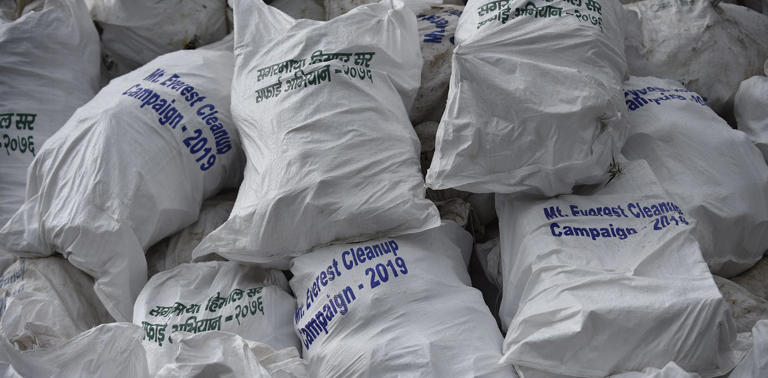
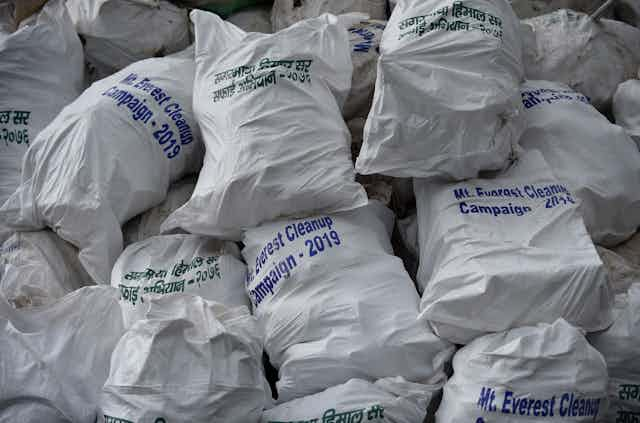
Climbers have turned Mount Everest into a high-altitude garbage dump, but sustainable solutions are within reach
Harold T. Stearns Professor of Earth Science, Wesleyan University
Senior Research Associate, Institute of Arctic and Alpine Research, University of Colorado Boulder
Disclosure statement
Alton Byers has lived and worked in Nepal, and has collaborated with communities around Everest to protect and restore ecosystems that have been damaged by trekkers, climbers and the tourism industry. He was lead author of a sustainable solid waste management plan for Sagarmatha National Park and Buffer Zone produced in 2020 by University of Colorado Boulder researchers with support from the National Geographic Society.
Suzanne OConnell does not work for, consult, own shares in or receive funding from any company or organisation that would benefit from this article, and has disclosed no relevant affiliations beyond their academic appointment.
Wesleyan University and University of Colorado provide funding as members of The Conversation US.
View all partners
Spring is go time for climbers who hope to summit Mount Everest, Earth’s highest peak above sea level. Hundreds of mountaineers from around the world travel to Asia in April and May, headed for base camps in Nepal and Tibet.
But jagged peaks won’t be the only thing they see. Especially on Everest’s more heavily traversed Nepal side, they’ll find fields of garbage – including cans, bottles, plastic and human and animal excrement.
Each year, more than 60,000 trekkers and climbers visit the Sagarmatha National Park and Buffer Zone , a high-altitude swath of the Khumbu region in northeast Nepal that includes Everest and seven other peaks. Some 400 to 500 climbers attempt to summit Everest every year.
The trash problem first became evident in the 1980s and 1990s, when climbing on the mountain and trekking in Khumbu began to increase. Climber and trekker numbers have further skyrocketed in the past 20 years .
Most coverage of this issue focuses on negative and sensational aspects, such as the frozen bodies of climbers who remain where they died on the mountain because removal operations are risky and expensive.
We are scholars who study geoscience and mountain geography , and one of us (Alton Byers) has lived in Nepal and worked with communities around Everest. We are encouraged to see increased efforts to address Everest’s massive trash problem. In our view, modern technology and international cooperation are key to ending the pileup of waste in this iconic setting.
Pollution from waste
For most visitors to this area of the Himalayas, Everest base camp on the upper reaches of the rapidly receding Khumbu Glacier is the ultimate destination, at an altitude of 17,589 feet (5,364 meters). Formerly a two- to three-week trek from Kathmandu, today the journey is most likely to begin at the Lukla Airport , which sits about 35 miles (60 kilometers) from base camp.
Climbers who aim to summit Everest typically spend up to two months on the mountain , including weeks making short, incremental ascents above base camp and back down again. This enables them to acclimate to the altitude before climbing to higher camps and then to the summit.
Much of the food and equipment headed to Everest also begins its journey at Lukla. Some is shipped to base camp by helicopter, but much of the gear is carried there by yaks, yak/cattle crossbreeds called dzopkio, mules and horses .
Lots of equipment, food and packaging, plus animals and porters, means a lot of garbage. A 2010 study estimated that park tourism generated 4.6 tons of solid waste per day during peak tourist periods in April-May and October-November.
Eventually most of this refuse is dumped into unsightly landfills a short distance from local villages. There it is burned, adding particulates and toxic chemicals to the air. The remaining ash is buried, where it can contaminate groundwater.
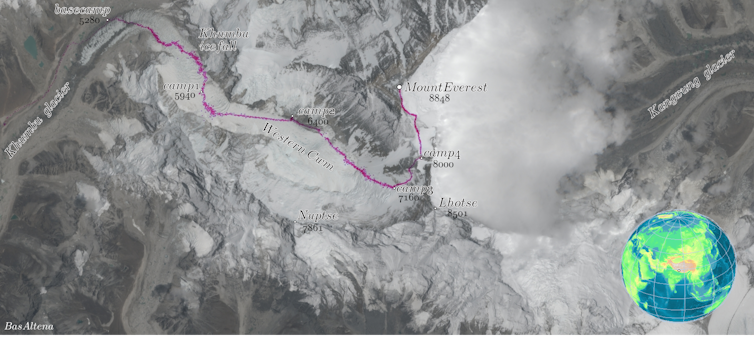
At the base camp, microplastics – likely from discarded mountaineering clothing, tents, ropes and boots – have been found in water and snow samples . High levels of perfluoroalkyl and polyfluoroalkyl substances, or PFAS , widely known as “forever chemicals,” have been found on the Khumbu glacier , probably from materials used to waterproof climbing boots, tents and clothing.
These substances could pose health risks for transient climbers, but are a more serious threat for people who live in the nearby settlements of Gorak Shep, Lobuche, Dugla and Pheriche for most of the year. Some of these villagers work at Everest base camp and are exposed there too.
And then there’s sewage. Most septic tanks at the hundreds of lodges located throughout the national park and buffer zone leak, further polluting groundwater . Camp Four, the last site that climbers occupy before they attempt to summit Everest, is covered with garbage and frozen, wind-swept feces.
National parks in developed countries have infrastructure to handle waste management, trash pickup, recycling and wastewater treatment. At Everest base camp, there are just collection barrels under toilets. Each year, some 50,000 pounds (22,000 kilograms) of human waste are brought to landfills several kilometers away .
Solutions for sustainable tourism
Recognizing the scale of this problem, initiatives are in progress to develop solutions.
The Sagarmatha Pollution Control Committee , created by local Sherpa people in 1991, is an Indigenous nonprofit organization that is responsible for monitoring garbage in the permit-required mountains and peaks. The group focuses on litter control and periodic base camp cleanups.
In 2014, the government of Nepal began requiring every mountaineer who climbs above the Everest base camp to bring back 18 pounds (8 kilograms) of solid waste from the mountain or forfeit a US$4,000 deposit. Of course, if you’ve paid $75,000 or more for the trip, losing the deposit may not be much of an incentive. Many people elect to forfeit it.
A nonprofit called Sagarmatha Next , established in 2019, is working to promote sustainable tourism in the Khumbu region, partnering with companies and organizations from around the world. The group has raised awareness by producing art works and souvenirs from trash. It also launched a “Carry Me Back” program that encourages tourists to take two-pound (one-kilogram) bags of solid waste, such as shredded plastic bottles, to the airstrip at Lukla for processing and disposal in Kathmandu.
At the local government’s request, the University of Colorado Boulder developed a sustainable solid waste management plan in 2019 for the national park and buffer zone. The COVID-19 pandemic delayed implementation of the plan, which proposes creating a five-step process: waste segregation, collection, sorting and shredding, transfer to shipment stations and transportation to recycling facilities in Kathmandu.
Another nonprofit initiative, the NeverRest Project , was created during the pandemic to provide environmental solutions for Mount Everest and other fragile ecosystems around the world. NeverRest is working with the Nepal Tourism Board to revolutionize high-altitude waste management using modern technology.
In 2023, the organization presented a concept plan for a sustainable Everest base camp that would install technologies such as portable solar tents to reduce use of fossil fuel; unisex portable urinals with multi-use filters that convert urine into water; incinerator toilets that transform human waste into ash; and modular geodesic dome tents designed for effective heat retention to reduce energy use.
In the 71 years since Sir Edmund Hillary and Sherpa Tenzing Norgay made the first known successful ascent of Mount Everest , this peak has been a setting for daring expeditions, triumphs and tragedies. We hope that the region’s garbage problem soon will fade into history as new approaches and technologies provide solutions for Everest and other remote high-mountain locations around the world.
- Mountaineering
- Microplastics
- Mount Everest
- Solid waste management

Events and Communications Coordinator

Assistant Editor - 1 year cadetship

Executive Dean, Faculty of Health

Lecturer/Senior Lecturer, Earth System Science (School of Science)

Sydney Horizon Educators (Identified)
CURRENT PRICES END MAY 12
Outside Festival feat. Thundercat and Fleet Foxes.
FROM JUST $44
Will There Be Drama on Mount Everest This Year? You Bet.
Every spring, hundreds of hopefuls make the trek to the world’s tallest summit and the surrounding high peaks. This is your base camp for all the news from the Himalayas.
Heading out the door? Read this article on the Outside app available now on iOS devices for members! >","name":"in-content-cta","type":"link"}}'>Download the app .
Hundreds of climbers and guides are venturing onto the world’s highest peak this month for the chance to spend a precious few moments on the summit. Our coverage of the mountaineering season in the Himalayas will encompass the climbs, rescues, records, and controversy on Everest. Veteran reporter and National Geographic Explorer Ben Ayers is leading our coverage alongside Nepali journalist Tulsi Rauniyar and Outside articles editor Frederick Dreier. We also have a series of in-depth features for 2024 on some of the most compelling stories on the peak: a profile of a forgotten hero from Everest’s first climb, a look at the brewing debate over the true summit locations of the highest peaks, and an examination of a deadly disaster on 26,335-foot Shishapangma that claimed four lives. Stay tuned to Outside ‘s Everest Season 2024 coverage for the latest stories from the Death Zone.
The Man Who Raced to Tell the World That Mount Everest Had Been Climbed
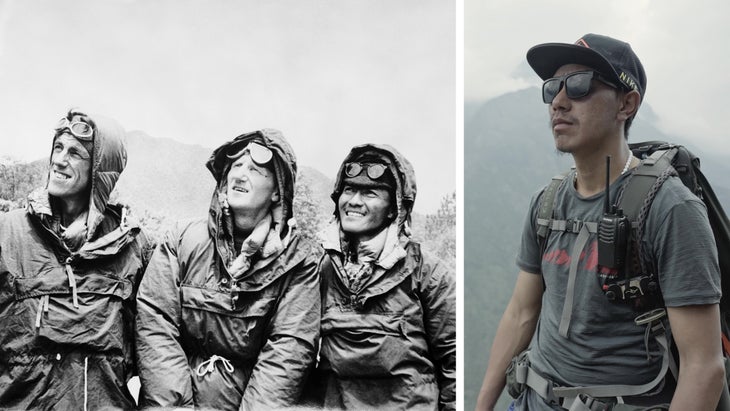
When Tenzing Norway and Edmund Hillary made history by reaching the summit, a courier named Ten Tsewang Sherpa ran 200 miles to Kathmandu to deliver the news. His efforts ended up killing him. Last year, his grandson and I retraced his steps.
The Latest from the Field

Removing Dead Bodies from Mount Everest Is Dangerous and Expensive. Here’s Why.
A team of 12 Nepalis is slated to ascend Mount Everest this month to bring five dead bodies down from the peak. Recovery missions come with a soaring price tag and a heightened potential for disaster.

Will Alex Honnold Ever Tackle Mount Everest? We Asked Him.
Five questions with the ‘Free Solo’ star about his future plans in big-wall climbing, high-altitude mountaineering, and outdoor filmmaking.
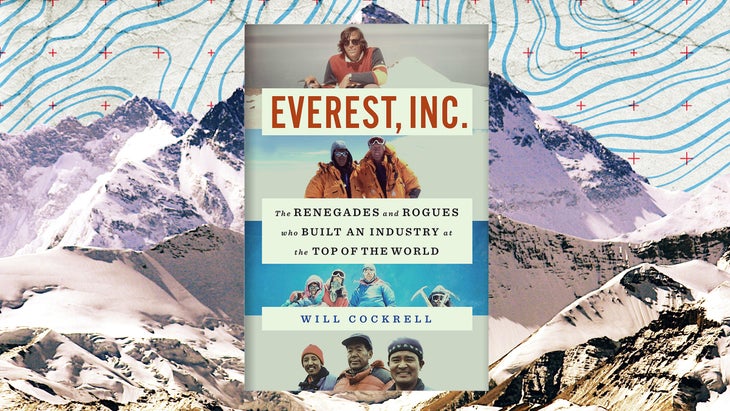
How Everest Was Turned into an Industry
Everest, Inc. , a new book from veteran outdoor journalist Will Cockrell, documents the mountain’s transformation, first by Western guides and climbers, and now by Sherpas and Nepalis.
Lost on Everest
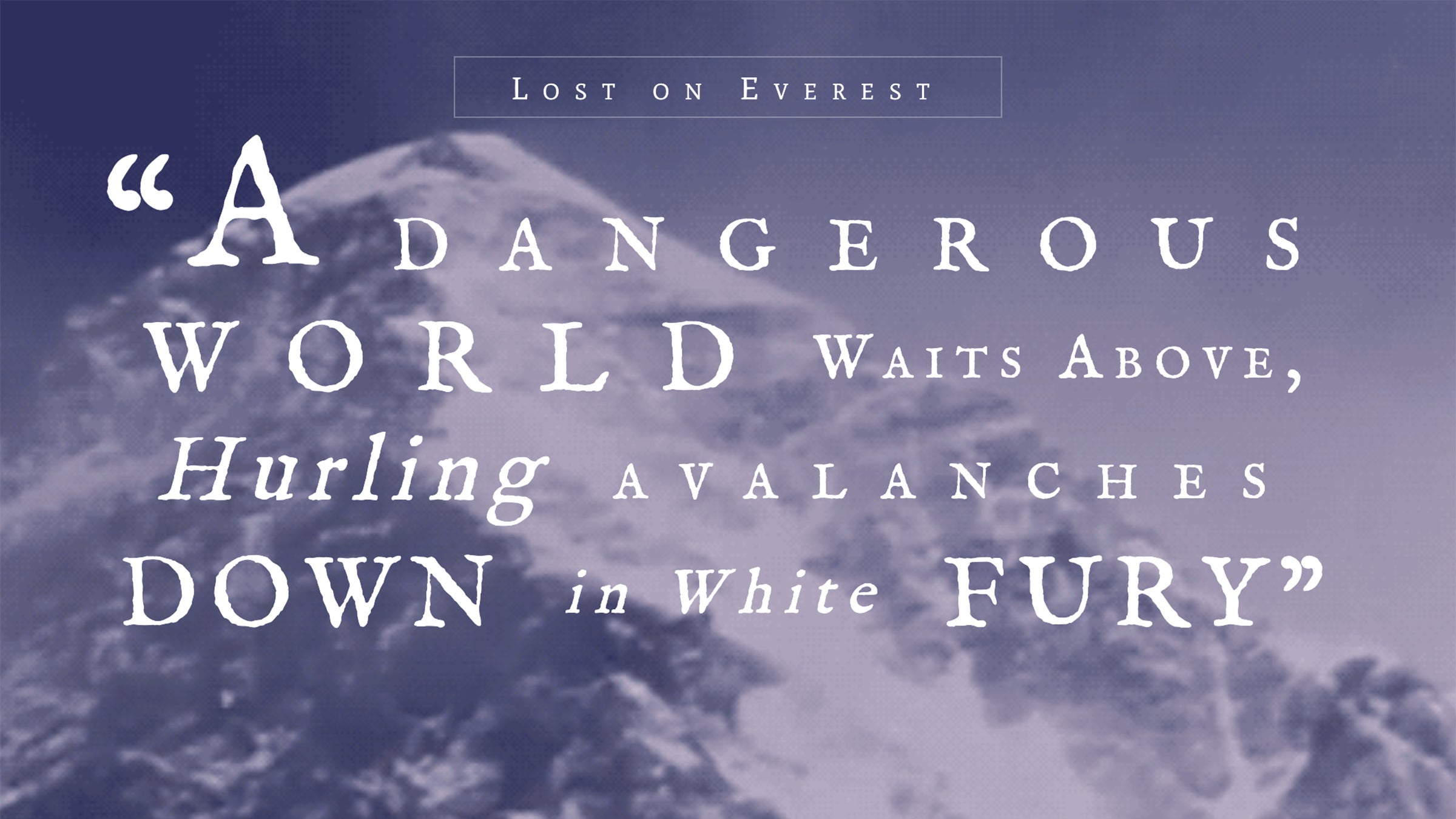
In 1963, Jim Whittaker became the first American to summit Everest. Three weeks after he did, a second party from the same team made an even more stunning assault on the mountain’s unclimbed West Ridge. Using never before published transcripts from the expedition, Grayson Schaffer takes a new look at a bold ascent that changed mountaineering.
Remembering the First Three Women to Climb Mount Everest

One inspired the world, one is in danger of being forgotten, and one disappeared. —originally published on Climbing
The Disposable Man: A Western History of Sherpas on Everest

For more than a century, Western climbers have hired Nepal’s Sherpas to do the most dangerous work on Mount Everest. It’s a lucrative way of life in a poor region, but no service industry in the world so frequently kills and maims its workers for the benefit of paying clients. The dead are often forgotten, and their families left with nothing but ghosts.
An Oral History of Langtang, the Valley Destroyed by the Nepal Earthquake

You’ve seen the images from Everest Base Camp and Kathmandu, but one village was hit so hard that it ceased to exist altogether. Half the population was buried. The others had to find a way out. This is their story.

You were told that Everest base camp is an insult to the true spirit of mountaineering. (Harrumph.) But why weren’t you told about the excellent bars, the butter people, and that friendly Playboy bunny from Poland? The author spends a month at the world’s most exclusive party town.
- Mount Everest
- Mountaineering
The Nepali Army Is Removing Trash and Bodies From Mount Everest
They expect to haul off ten metric tons of garbage and up to five bodies from the world’s tallest peak
/https://tf-cmsv2-smithsonianmag-media.s3.amazonaws.com/accounts/headshot/SarahKuta.png)
Daily Correspondent
:focal(3024x2016:3025x2017)/https://tf-cmsv2-smithsonianmag-media.s3.amazonaws.com/filer_public/99/16/99164470-8527-4455-803a-d36348c268be/gettyimages-1224178459.jpg)
Every spring, hundreds of mountaineers from around the world travel to the Himalayas in hopes of summiting Mount Everest , the world’s tallest mountain. As they make the slow, arduous and sometimes fatal journey to the summit, they leave behind garbage, gear and human waste.
Authorities have recently implemented new rules to help curb Everest’s trash problem. But in the meantime, the 29,032-foot-tall peak remains littered with debris.
This week, Nepali troops are launching their annual cleanup on the mountain. On Sunday, 12 members of the Nepali military were slated to arrive at Everest Base Camp for this year’s Mountain Cleanup Campaign, an initiative launched in partnership with Unilever in 2019, reports CNN ’s Lilit Marcus.
They’ll be supported by 18 sherpas as they remove an estimated ten metric tons of garbage and debris from Mount Everest, as well as nearby peaks Mount Lhotse and Mount Nuptse, according to the Himalayan Times ’ Rastriya Samachar Samiti.
They will also attempt to bring down the bodies of five climbers who died while ascending or descending Everest. Last year was one of the deadliest seasons on record: Twelve mountaineers died, while another five who went missing are presumed dead.
More than 300 climbers have died attempting to summit Everest since exploration began there in the early 20th century. Some get caught in avalanches or fall into crevasses, while others suffer from fatal medical conditions like frostbite or high-altitude cerebral edema , a condition that causes brain swelling .
Experts say human-caused climate change was at least partially responsible for last year’s high death toll.
“The main cause is the changing in the weather,” said Yuba Raj Khatiwada, director of Nepal’s tourism department, to the Guardian ’s Hannah Ellis-Petersen in May 2023. “This season the weather conditions were not favorable; it was very variable. Climate change is having a big impact in the mountains.”
Last year, Nepal’s government issued over 450 permits to mountaineers who wanted to summit Everest. Each permit costs thousands of dollars—on top of the large sums mountaineers often pay to guide companies.
Some critics have argued that the government is issuing too many permits. They’ve also called out low-cost guiding companies for taking on inexperienced clients and focusing too little on climber safety.
“People with little or no experience who book under-resourced expeditions are exposing themselves to huge risks,” Caroline Pemberton, co-owner of Climbing the Seven Summits, told Outside magazine ’s Alan Arnette last year.
This year’s Everest season will begin soon. For a brief period in the spring, the fierce winds that blow at the top of the mountain sometimes die down enough to allow climbers to reach the summit safely.
“Mount Everest protrudes into the stratosphere, and most of the year the summit is buffeted by winds of over 100 miles per hour that will kill a climber in minutes or even hurtle them into the void,” John All, a geographer at Western Kentucky University who summited Everest in 2010, told Popular Mechanics ’ Rob Goodier in 2012. “It is only during the onset or [cessation] of the Asian Monsoon that these winds die down and allow climbers short seven- to ten-day windows to climb the mountain.”
In recent years, authorities have announced new regulations intended to improve safety and reduce trash on Everest. All mountaineers are required to rent and wear an electronic tracking device , collect and carry their own waste back to base camp and pay an expensive trash deposit . They only get the deposit back if they return with at least 8 kilograms (around 18 pounds) of garbage.
Get the latest stories in your inbox every weekday.
/https://tf-cmsv2-smithsonianmag-media.s3.amazonaws.com/accounts/headshot/SarahKuta.png)
Sarah Kuta | READ MORE
Sarah Kuta is a writer and editor based in Longmont, Colorado. She covers history, science, travel, food and beverage, sustainability, economics and other topics.
- Culture & Lifestyle

- Madhesh Province
- Lumbini Province
- Bagmati Province
- National Security
- Koshi Province
- Gandaki Province
- Karnali Province
- Sudurpaschim Province
- International Sports
- Brunch with the Post
- Life & Style
- Entertainment
- Investigations
- Climate & Environment
- Science & Technology
- Visual Stories
- Crosswords & Sudoku
- Corrections
- Letters to the Editor
- Today's ePaper
Without Fear or Favour UNWIND IN STYLE

What's News :
- Home Minister gets clean chit
- Madhesh politics
- Mental health of pregnant women
- Private sector on economic revival
- Chef Aditya Mishra
Everest: A high-altitude garbage dump

Suzanne OConnell & Alton C Byers
Spring is go time for climbers who hope to summit Mount Everest, Earth’s highest peak above sea level. Hundreds of mountaineers from around the world travel to Asia in April and May headed for base camps in Nepal and Tibet.
But jagged peaks won’t be the only thing they see. Especially on Everest’s more heavily traversed Nepal side, they’ll find garbage fields—including cans, bottles, plastic and human and animal excrement.
Each year, more than 60,000 trekkers and climbers visit the Sagarmatha National Park and Buffer Zone, a high-altitude swath of the Khumbu region in northeast Nepal that includes Everest and seven other peaks—some 400 to 500 climbers attempt to summit Everest every year.
The trash problem first became evident in the 1980s and 1990s, when climbing on the mountain and trekking in Khumbu began to increase. Climber and trekker numbers have further skyrocketed in the past 20 years.
Most coverage of this issue focuses on negative and sensational aspects, such as the frozen bodies of climbers who remain where they died on the mountain because removal operations are risky and expensive.
We are scholars who study geoscience and mountain geography. One of us (Alton Byers) has lived in Nepal and worked with communities around Everest. We are encouraged to see increased efforts to address Everest’s massive trash problem. In our view, modern technology and international cooperation are key to ending the waste pileup in this iconic setting.
Pollution from waste
For most visitors to this area of the Himalayas, Everest base camp on the upper reaches of the rapidly receding Khumbu Glacier is the ultimate destination, at an altitude of 17,589 feet (5,364 metres). Formerly a two- to three-week trek from Kathmandu, today the journey is most likely to begin at the Lukla Airport, which sits about 35 miles (60 kilometres) from base camp.
Climbers who aim to summit Everest typically spend up to two months on the mountain, including weeks making short, incremental ascents above base camp and back down again. This enables them to acclimate to the altitude before climbing to higher camps and then to the summit.
Much of the food and equipment headed to Everest also begins its journey at Lukla. Some is shipped to base camp by helicopter, but much of the gear is carried there by yaks, yak/cattle crossbreeds called dzopkio, mules and horses.
Lots of equipment, food and packaging, plus animals and porters, means a lot of garbage. A 2010 study estimated that park tourism generated 4.6 tons of solid waste per day during peak tourist periods in April-May and October-November.
Eventually, most of this refuse is dumped into unsightly landfills a short distance from local villages. There it is burned, adding particulates and toxic chemicals to the air. The remaining ash is buried, where it can contaminate groundwater.
At the base camp, microplastics—likely from discarded mountaineering clothing, tents, ropes, and boots—have been found in water and snow samples. High levels of perfluoroalkyl and polyfluoroalkyl substances, or PFAS, widely known as “forever chemicals,” have been found on the Khumbu glacier, probably from materials used to waterproof climbing boots, tents, and clothing.
These substances could pose health risks for transient climbers but are a more serious threat for people who live in the nearby settlements of Gorak Shep, Lobuche, Dugla and Pheriche for most of the year. Some of these villagers work at Everest base camp and are exposed there too.
And then there’s sewage. Most septic tanks at the hundreds of lodges located throughout the national park and buffer zone leak, further polluting groundwater. Camp Four, the last site that climbers occupy before they attempt to summit Everest, is covered with garbage and frozen, wind-swept faeces.
National parks in developed countries have infrastructure to handle waste management, trash pickup, recycling and wastewater treatment. At Everest base camp, there are just collection barrels under toilets. Each year, some 50,000 pounds (22,000 kilograms) of human waste are brought to landfills several kilometres away.
Solutions for sustainable tourism
Recognising the scale of this problem, initiatives are in progress to develop solutions.
The Sagarmatha Pollution Control Committee, created by local Sherpa people in 1991, is an Indigenous nonprofit organisation that is responsible for monitoring garbage in the permit-required mountains and peaks. The group focuses on litter control and periodic base camp cleanups.
In 2014, the government of Nepal began requiring every mountaineer who climbs above the Everest base camp to bring back 18 pounds (8 kilograms) of solid waste from the mountain or forfeit a US$4,000 deposit. Of course, if you’ve paid $75,000 or more for the trip, losing the deposit may not be much of an incentive. Many people elect to forfeit it.
A nonprofit called Sagarmatha Next, established in 2019, is working to promote sustainable tourism in the Khumbu region, partnering with companies and organisations from around the world. The group has raised awareness by producing artworks and souvenirs from trash. It also launched a “Carry Me Back” programme that encourages tourists to take two-pound (one-kilogram) bags of solid waste, such as shredded plastic bottles, to the airstrip at Lukla for processing and disposal in Kathmandu.
At the local government’s request, the University of Colorado Boulder developed a sustainable solid waste management plan in 2019 for the national park and buffer zone. The Covid-19 pandemic delayed implementation of the plan, which proposes creating a five-step process: Waste segregation, collection, sorting, and shredding, transfer to shipment stations, and transportation to recycling facilities in Kathmandu.
Another nonprofit initiative, the NeverRest Project, was created during the pandemic to provide environmental solutions for Mount Everest and other fragile ecosystems around the world. NeverRest is working with the Nepal Tourism Board to revolutionise high-altitude waste management using modern technology.
In 2023, the organisation presented a concept plan for a sustainable Everest base camp that would install technologies such as portable solar tents to reduce the use of fossil fuels, unisex portable urinals with multi-use filters that convert urine into water, incinerator toilets that transform human waste into ash, and modular geodesic dome tents designed for effective heat retention to reduce energy use.
In the 71 years since Sir Edmund Hillary and Sherpa Tenzing Norgay made the first known successful ascent of Mount Everest, this peak has been a setting for daring expeditions, triumphs and tragedies. We hope that the region’s garbage problem will soon fade into history as new approaches and technologies provide solutions for Everest and other remote high-mountain locations around the world.
-The Conversation
Suzanne OConnell OConnell is Harold T Stearns Professor of Earth Science at Wesleyan University.
Alton C Byers Byers is a Senior Research Associate at the Institute of Arctic and Alpine Research, University of Colorado Boulder.
Related News

Dissecting PhD sagas—II
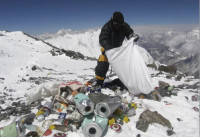
Understanding Nepali bureaucracy
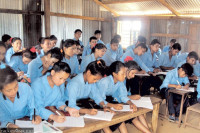
Massing of education

Bracing for Modi’s third term

Protecting local media from social media
Most read from columns.

Are we serious about our IT industry?
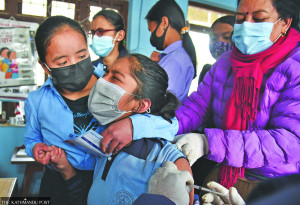
The risks of “Disease X” in Asia

Dissecting PhD sagas—I

Editor's Picks

Nepal to use drones to transport garbage from Mount Everest

Regulatory void complicates child adoption process in Nepal
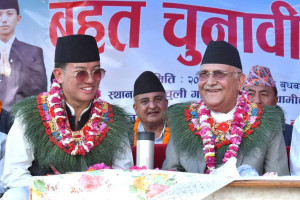
Ilam bypoll: Fillip for old parties, reality check for RSP
.jpg&w=300&height=200)
Nepal sets sight on multi-billion dollar LGBTIQ tourism market
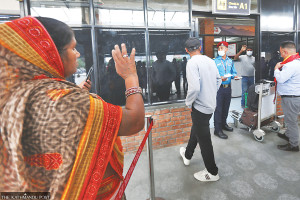
Escalating Middle East crisis threatens Nepali economy
E-paper | may 10, 2024.
- Read ePaper Online

IMAGES
COMMENTS
Reach the highest point on earth or choose to live out your dream by standing at the foot of Mt. Everest (8,848 m). ... Nepal Tourism Board is a national tourism organization of Nepal established in 1998 by an Act of Parliament in the form of partnership between the Government of Nepal and private sector tourism industry to develop and market ...
Unforgettable Experiences in Everest. Trek to the Roof of the World: Embark on the iconic Everest Base Camp Trek, offering stunning vistas and unparalleled access to the world's highest mountain.For breathtaking lake views, consider the Gokyo Lakes Trek or traverse challenging high passes on the Three Passes Trek.; Bike Through Rugged Terrain: Thrill-seekers will find an exhilarating ...
Mount Everest is the highest peak in the world and a dream destination for many adventurers. If you want to experience the majestic beauty of this mountain, you can find all you need to know before you go on Tripadvisor. Read reviews, articles and photos from other travelers who have visited Mount Everest, and get tips on how to plan your trip, book your tickets and accommodation, and enjoy ...
No. 1: Mount Everest. Type: Mountains, Nature & Parks. Recommended visiting: 1 day. Mount Everest is the highest mountain in the world with an elevation of 8844.43 meters. Thousands of people make their expedition from far away to explore the splendid looks of "The Third Pole". Mount Everest is located on the border of China and Nepal.
"With increased tourism, microplastics throughout Mt. Everest is expected to rise, creating issues for the environment and people of the Khumbu region," said Imogen Napper, National Geographic Explorer and first author of "Reaching New Heights in Plastic Pollution — Preliminary Findings of Microplastics on Mount Everest."
Everest Tours & Trips. Find the right tour package for you through Mount Everest. We've got 771 trips going to Mount Everest, starting from just 3 days in length, and the longest tour is 65 days. The most popular month to go is May, which has the most tour departures. 250+ Mount Everest tours with 3,298 reviews.
The best time to visit Mount Everest is in the spring and autumn for several reasons. Mount Everest's changeable, extreme climate, in particular, is a determining factor. The summit temperature never rises above freezing, or 0° C (32° F). Its summit temperatures in January average -36° C (-32 ° F) and can drop to -60° C (-76° F), and ...
Mount Everest is a peak in the Himalaya mountain range. It is located between Nepal and Tibet, an autonomous region of China. At 8,849 meters (29,032 feet), it is considered the tallest point on Earth. In the nineteenth century, the mountain was named after George Everest, a former Surveyor General of India.
Everest Region. Nepal, Asia. As the main approach route to Mt Everest (Sagarmatha), the Solukhumbu region has an almost mystical status in the world of trekking. The two-week climb to Everest Base Camp is perhaps the world's most famous trek, and tens of thousands of trekkers tackle the route every year for grandstand views of the world's ...
Mount Everest is the world's tallest mountain at 8,848.86 m (29,032 ft). It straddles the border of China / Tibet and Nepal and can be visited from either side: . Sunset view of Everest. Everest Base Camp Trek through Khumbu (Sagarmatha National Park), the more commonly visited region on the Nepalese (southern) side of the mountain; Qomolangma, the less visited nature reserve on the Tibetan ...
Located just above Gorak Shep and on the southern ridge of Mt. Pumori in the Khumbu Himalayan range, Kala Patthar is a well-renowned tourist destination. If you wish to see Mount Everest in the closest possible distance then Kala Patthar is the perfect location and as it provides such magnificent views, it is a popular destination in the Khumbu ...
The Sagarmatha Pollution Control Committee (SPCC) was established in 1991 to manage the growing waste problem in the Everest region and has done its best to improve the conditions on the mountain. Volunteers removed 10.3 tons of rubbish from the slopes of Everest and the approach to Everest Base Camp in 2019, making just a small dent in Everest ...
Explore an extraordinary adventure tour to the iconic Mount Everest with our carefully curated collection of the 14 best Mount Everest tour packages.Created by local travel experts who know the region intimately, these tours offer an immersive experience in the heart of the majestic Himalayas.From thrilling treks to breathtaking helicopter tours, we have options to suit every adventurer's desire.
Pikey Peak (4,065m) offers an even farther away, and thus more encompassing view of Everest and the surrounding mountains. Edmund Hillary, part of Mt Everest's first ascend team, declared this viewpoint the best in Nepal. In addition to Everest, you can see far west to 8,000m giants Dhaulagiri and east to Kanchenjunga.
Since 1953, 17 percent of all summiteers have been under 30 years old. In 2022, that number had dropped to 13 percent, while climbers over 50 increased from the historical average of 14 percent to ...
Published: June 7, 2019 8:53am EDT. The last days of Mt Everest's spring window for 2019 witnessed the deaths of 11 climbers. Images of hundreds of mountaineers queuing to reach the summit and ...
Mount Everest Tourism. Type of destination: Mountain/Peak. Ideal visit duration: 2 days for base camp visit, 2 months for summit expedition. Mount Everest, part of the Himalaya range in Asia, is the highest peak on Earth, with its summit reaching an elevation of 8,848.86 meters above sea level. It is located in the Sagarmatha National Park in ...
4. Everest Mountain Flight is the most famous day tour activity available in Kathmandu, Nepal. Moreover, it is in service all year long to fly over the Himalayas. The flight mainly highlights an up close and aerial view of Mt. Everest (8848 m), the highest peak in the world. The flight usually lasts between 50 minutes up to an hour.
Mount Everest is Earth's highest mountain above sea level, located in the Mahalangur Himal sub-range of the Himalayas. ... Taranath Adhikari—the director general of Nepal's tourism department—said they have plans to move the base camp to a lower altitude. This would mean a longer distance for climbers between the base camp and Camp 1.
In fact, locals have decried recent calls for Mount Everest to be restricted due to environmental damage because so many rely on tourism to provide a majority of their annual income. For example, sherpas, or mountain guides, in particular can make upwards of $2,000 per expedition, far exceeding the average Nepalese annual income.
Mountains. Everest. Sustainable tourism. Register now. Everest climbing season is underway. For a few weeks each spring, the weather improves just enough to give climbers a chance of scaling the ...
As more trekkers and climbers are drawn to Mount Everest and Nepal's other Himalayan peaks, trails and slopes are becoming overcrowded and debris-strewn. ... The Nepal Tourism Board (NTB ...
A job on Everest is the most lucrative of these roles. The Nepali Government estimates that most guides earn about US$6,000 per expedition, but the range is broad, from camp cooks (perhaps US ...
In 2014, the government of Nepal began requiring every mountaineer who climbs above the Everest base camp to bring back 18 pounds (8 kilograms) of solid waste from the mountain or forfeit a US ...
Spring is go time for climbers who hope to summit Mount Everest, Earth's highest peak above sea level. ... A 2010 study estimated that park tourism generated 4.6 tons of solid waste per day ...
A team of 12 Nepalis is slated to ascend Mount Everest this month to bring five dead bodies down from the peak. Recovery missions come with a soaring price tag and a heightened potential for disaster.
Nepal plans to jack up the price of a climbing permit for Everest by $4,000 to $15,000 in a bid to streamline mountain tourism and control numbers amid persistent complaints over the growing number of deaths on the world's highest summit. "We have proposed a new royalty fee of $15,000 per person for a foreigner, which will be implemented by ...
With the ascent of Mt. Everest, he successfully completed climbing the highest peak on each of the world's seven continents, becoming the 58th person to conquer the 'Seven Summits'.
"Mount Everest protrudes into the stratosphere, and most of the year the summit is buffeted by winds of over 100 miles per hour that will kill a climber in minutes or even hurtle them into the ...
Spring is go time for climbers who hope to summit Mount Everest, Earth's highest peak above sea level. ... A 2010 study estimated that park tourism generated 4.6 tons of solid waste per day during peak tourist periods in April-May and October-November. Eventually, most of this refuse is dumped into unsightly landfills a short distance from ...